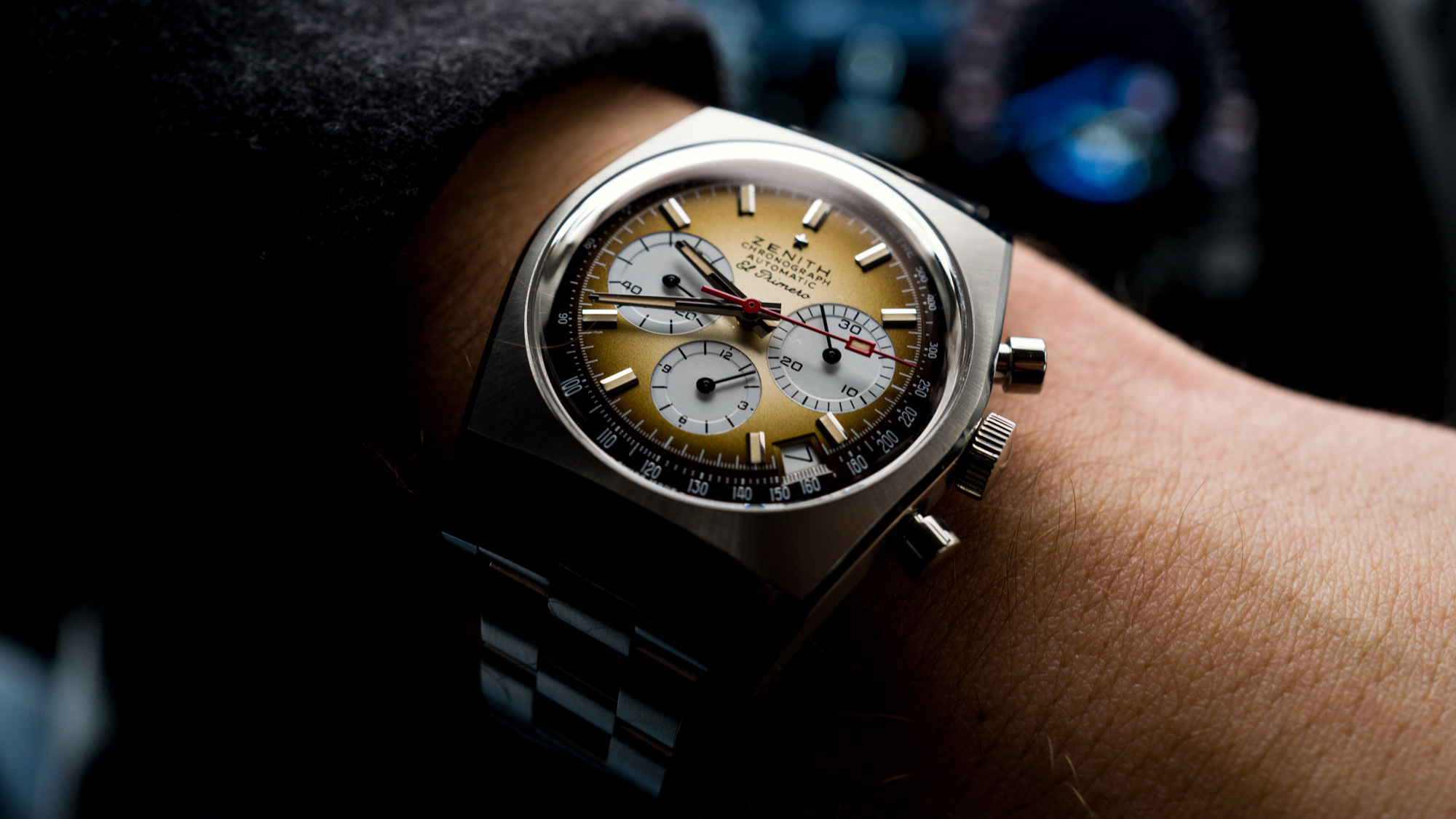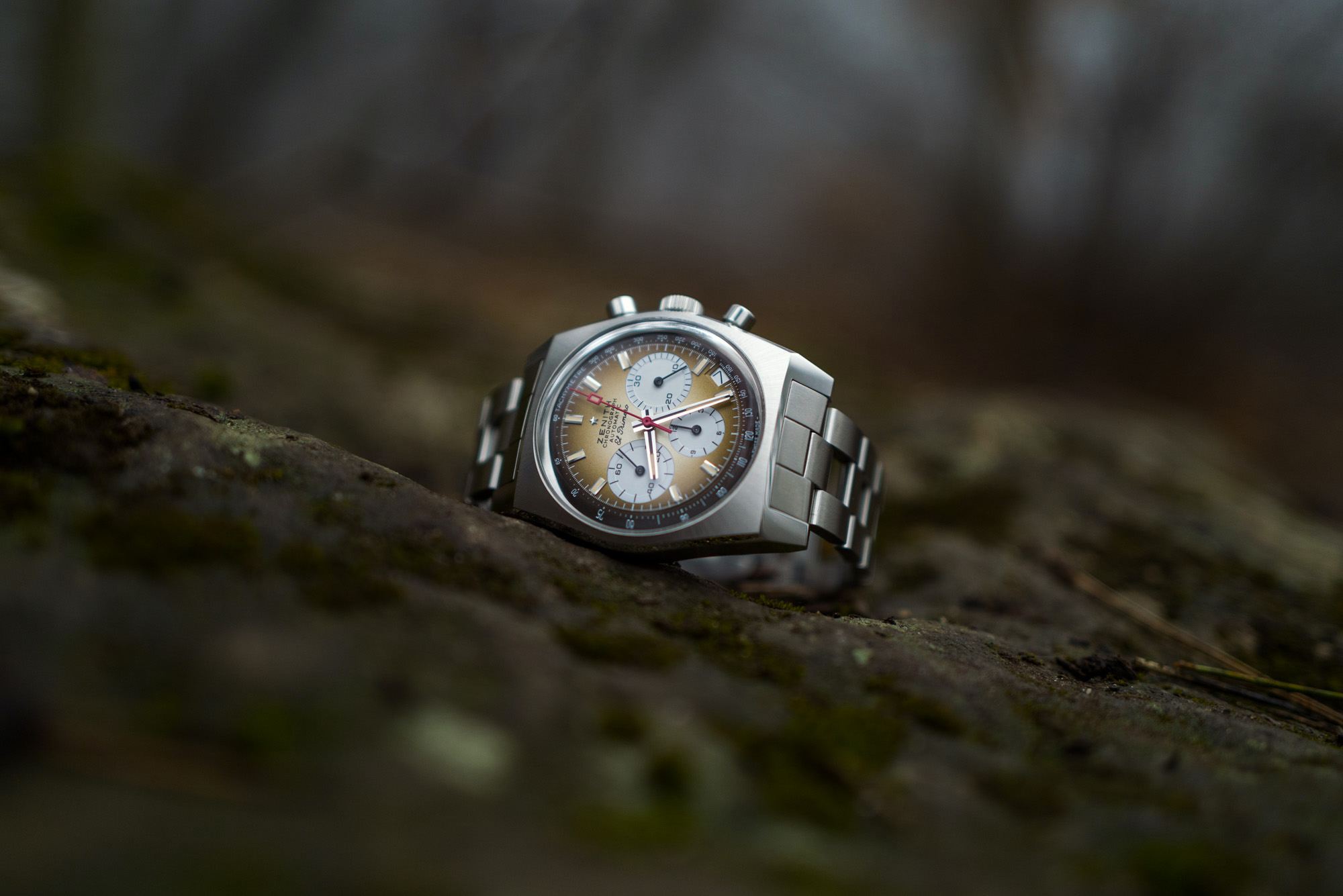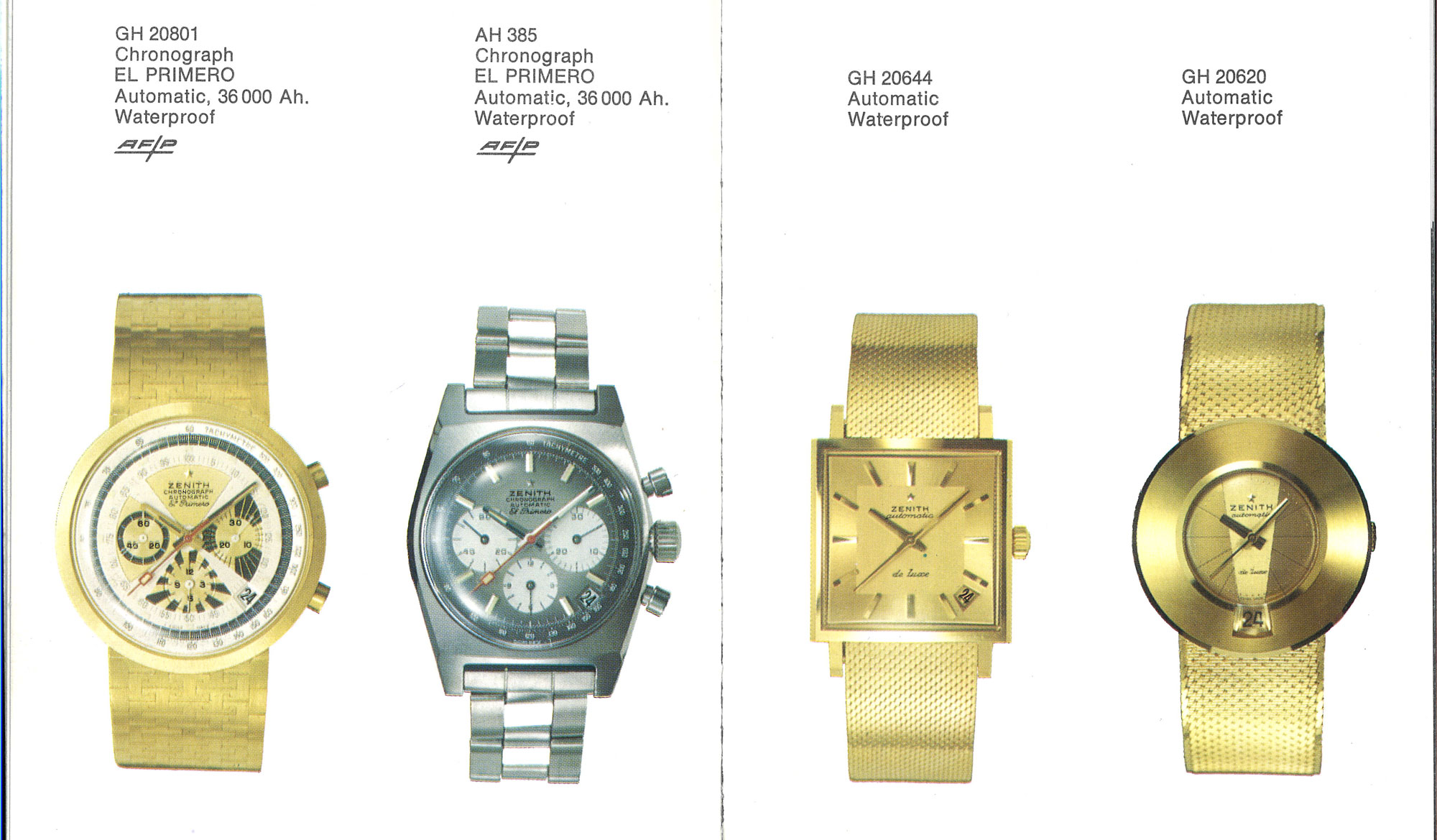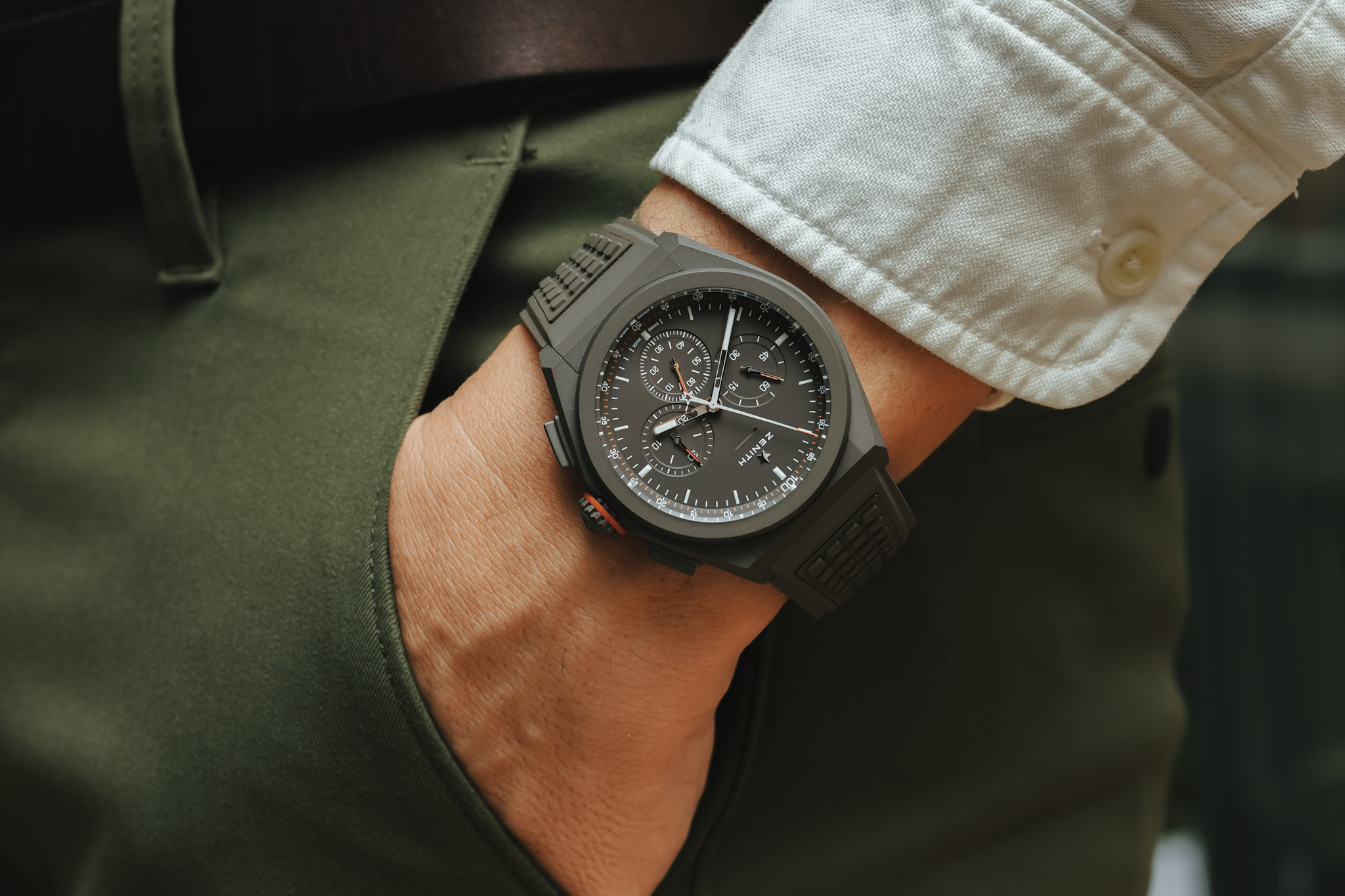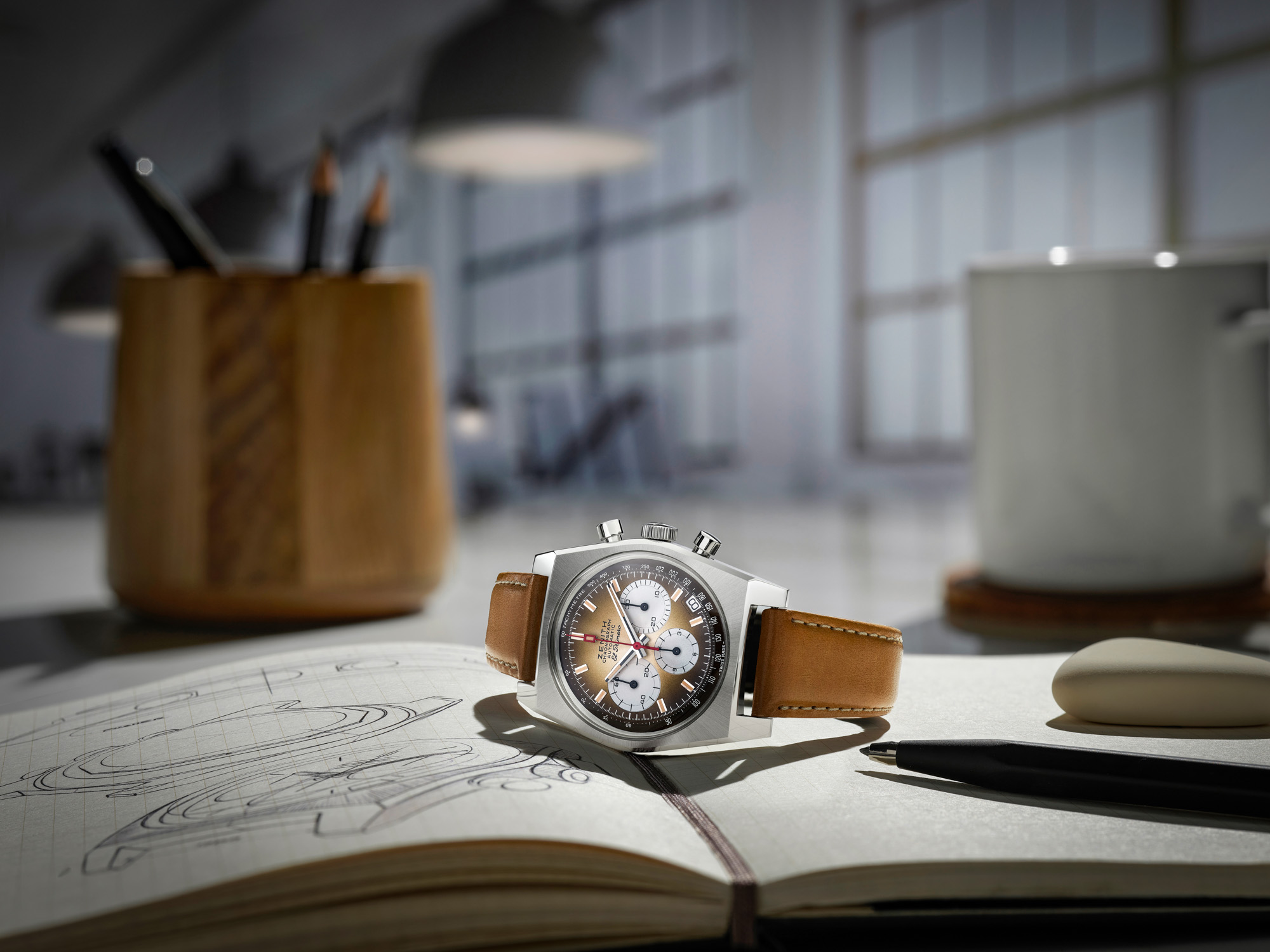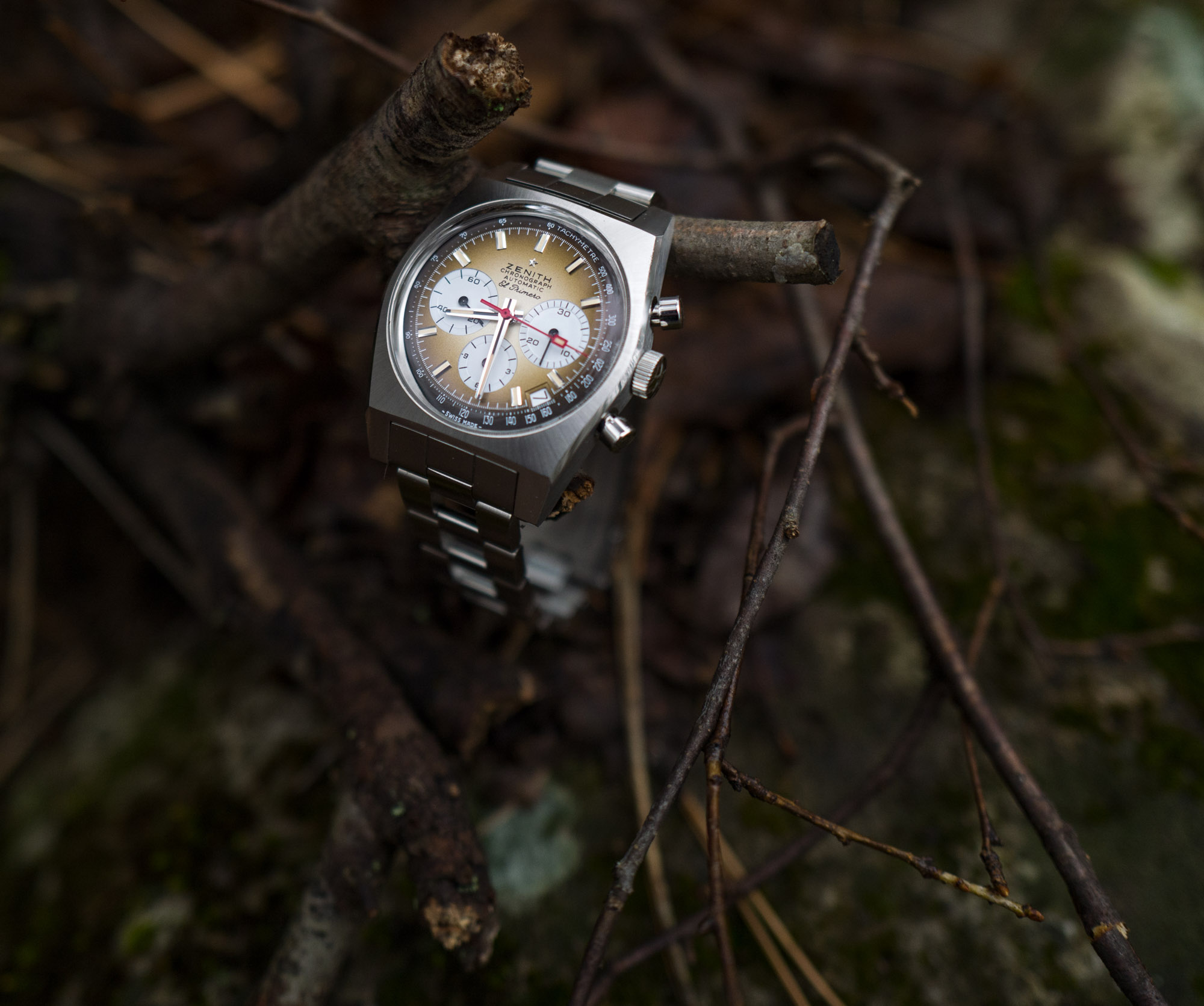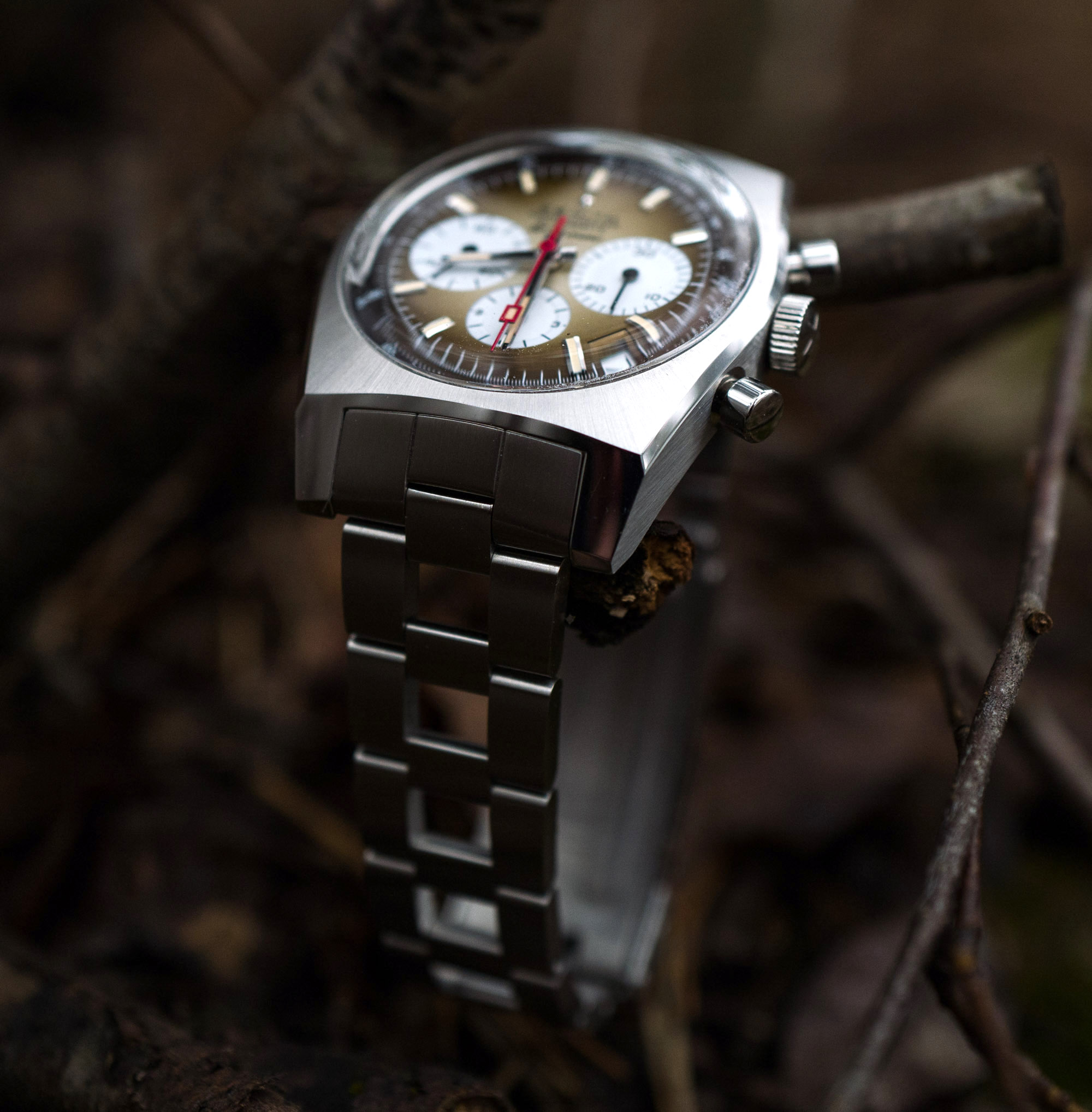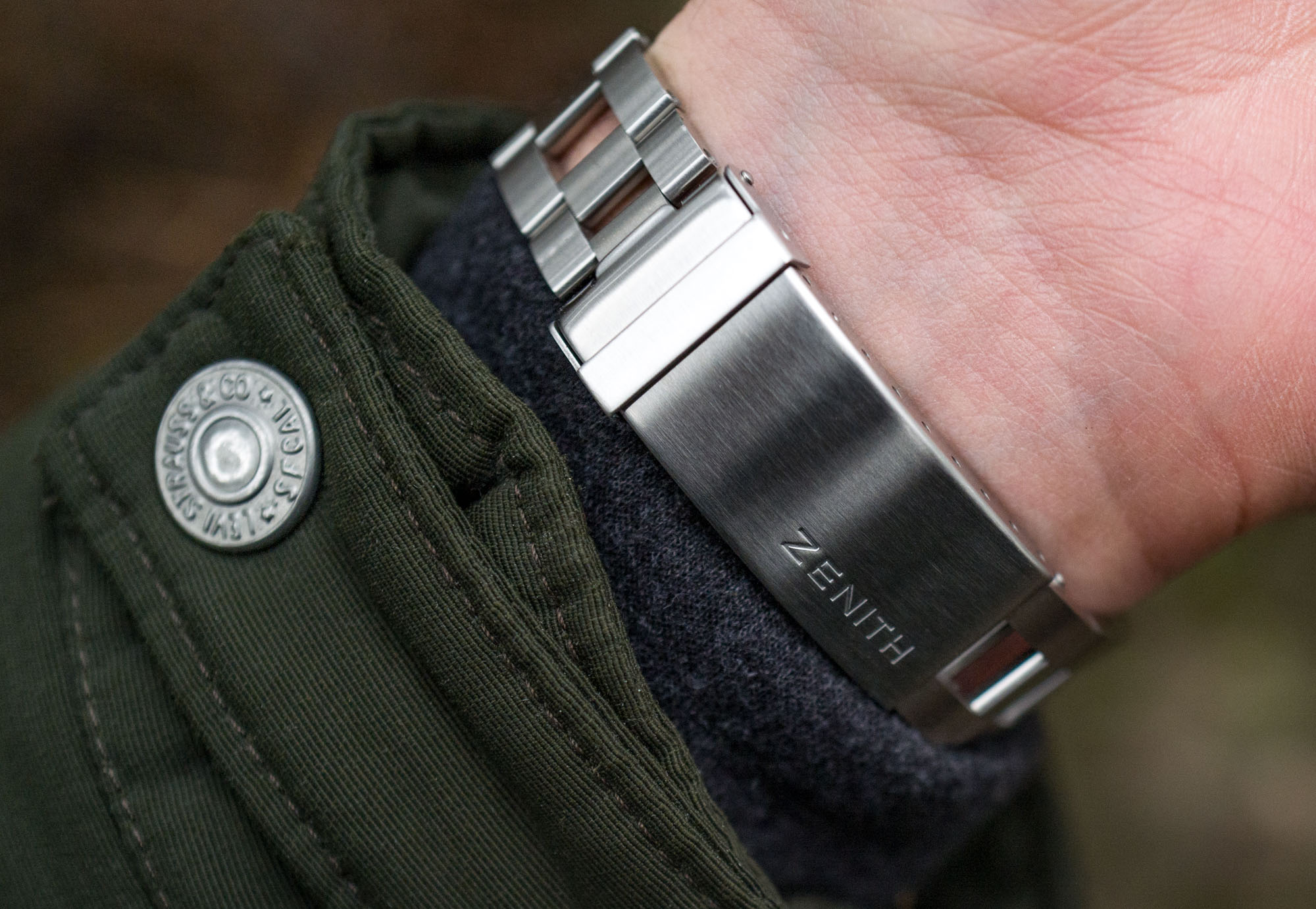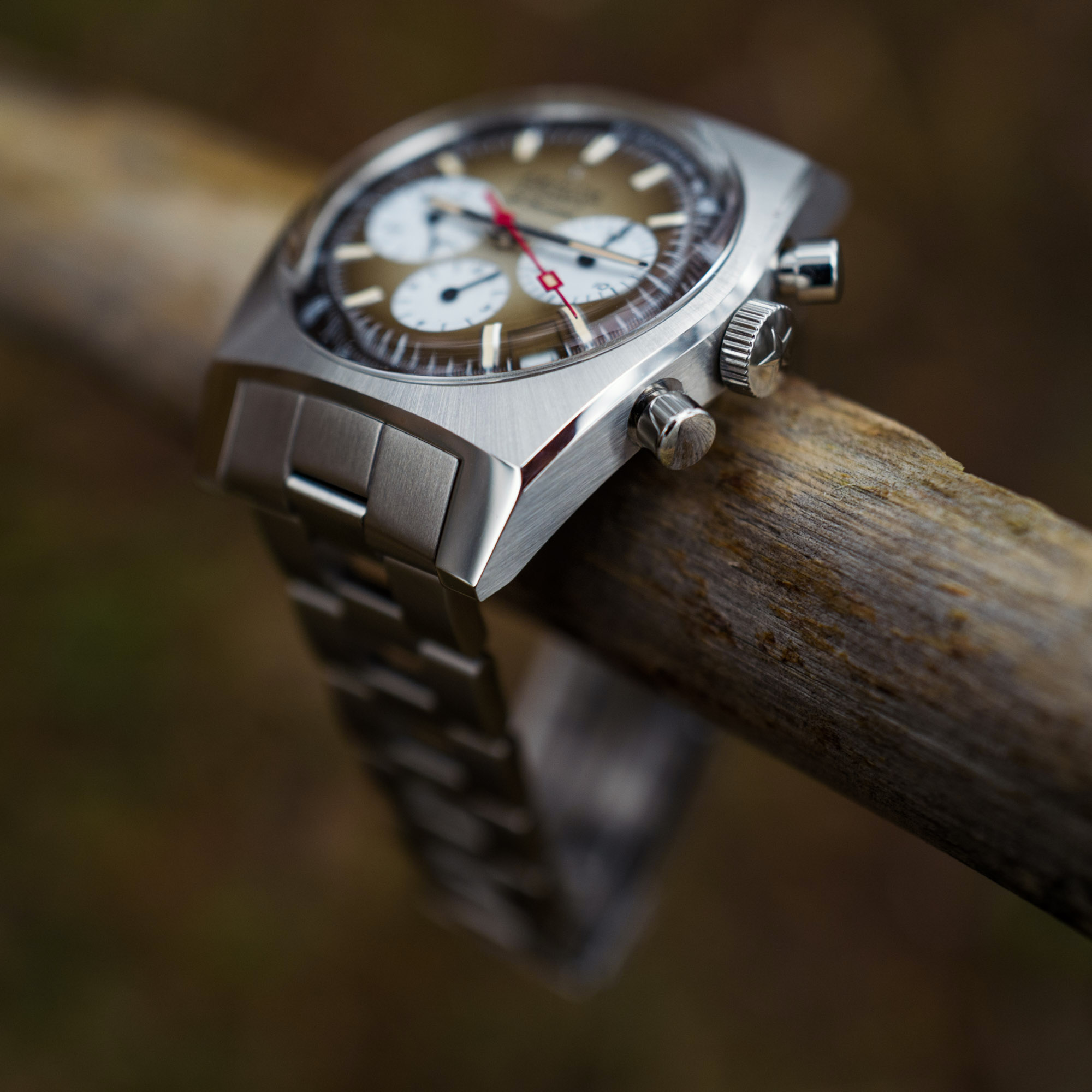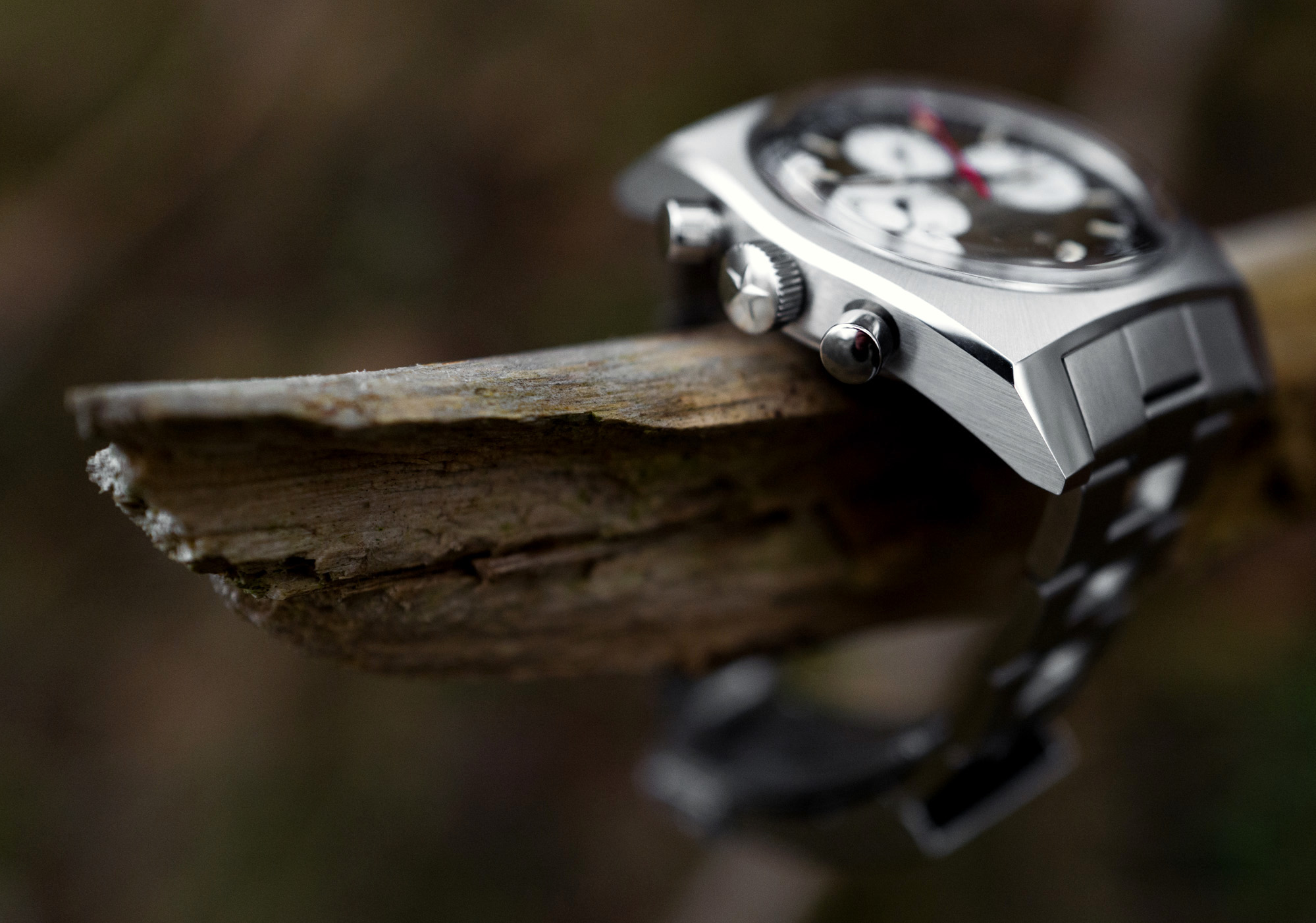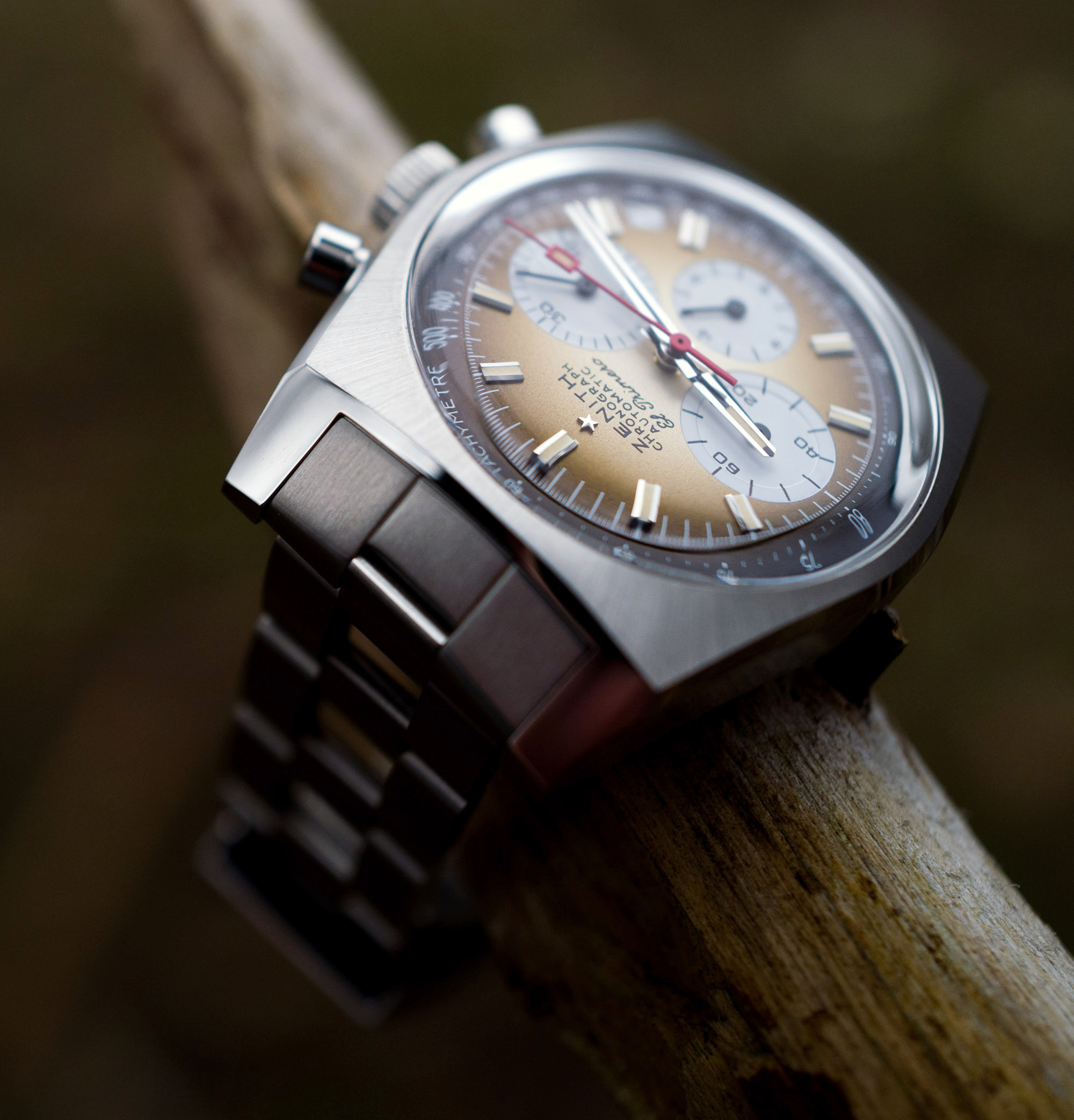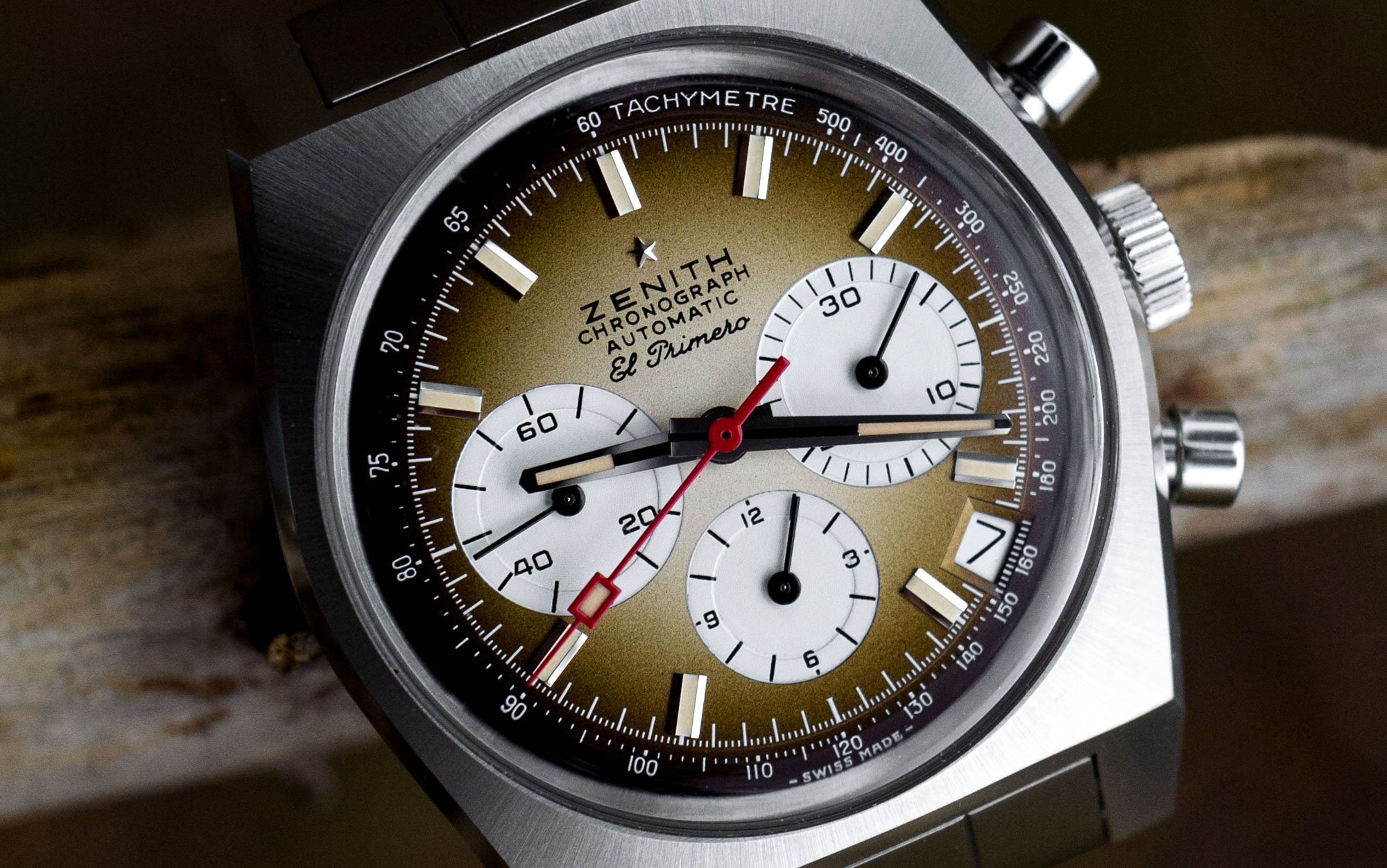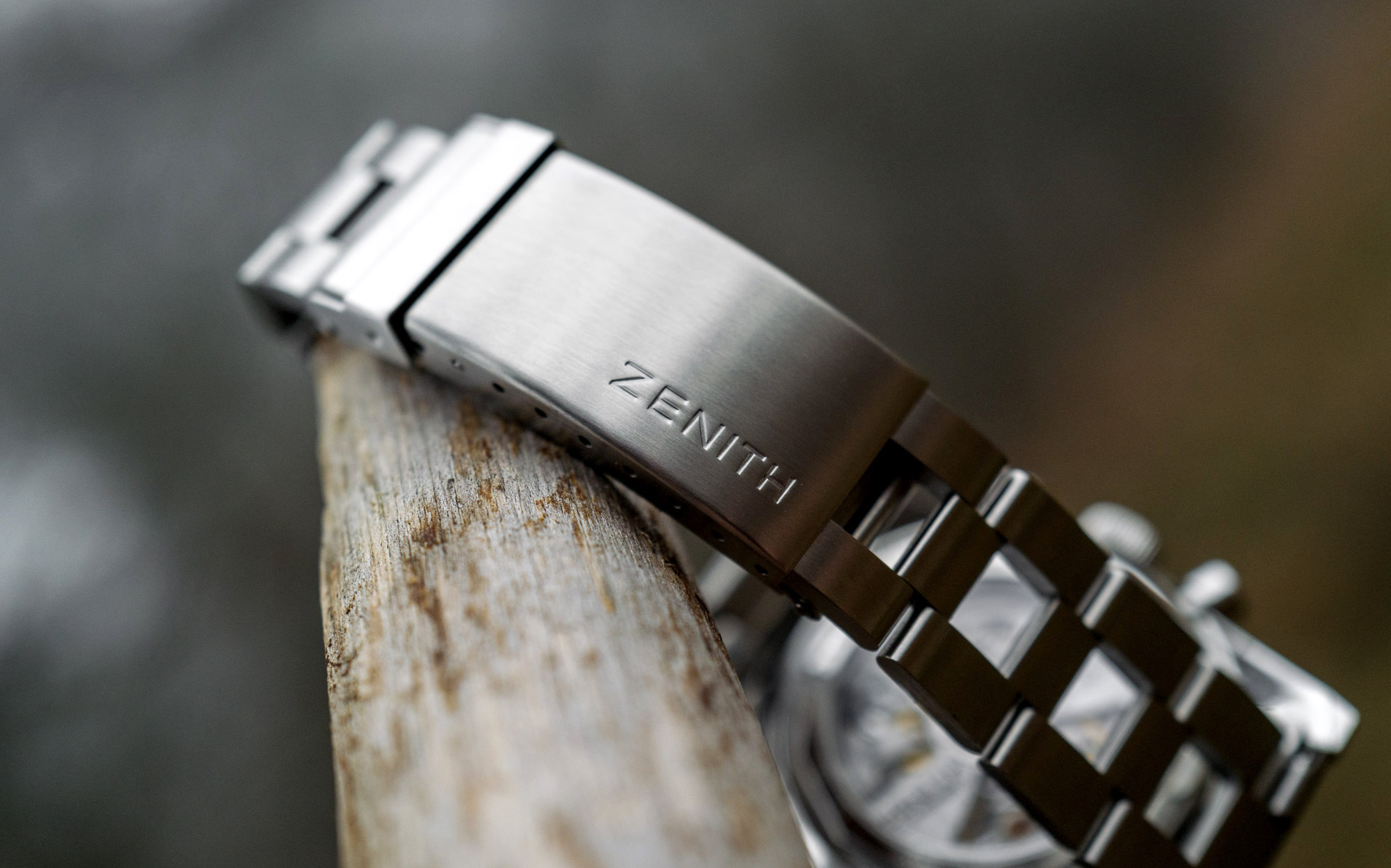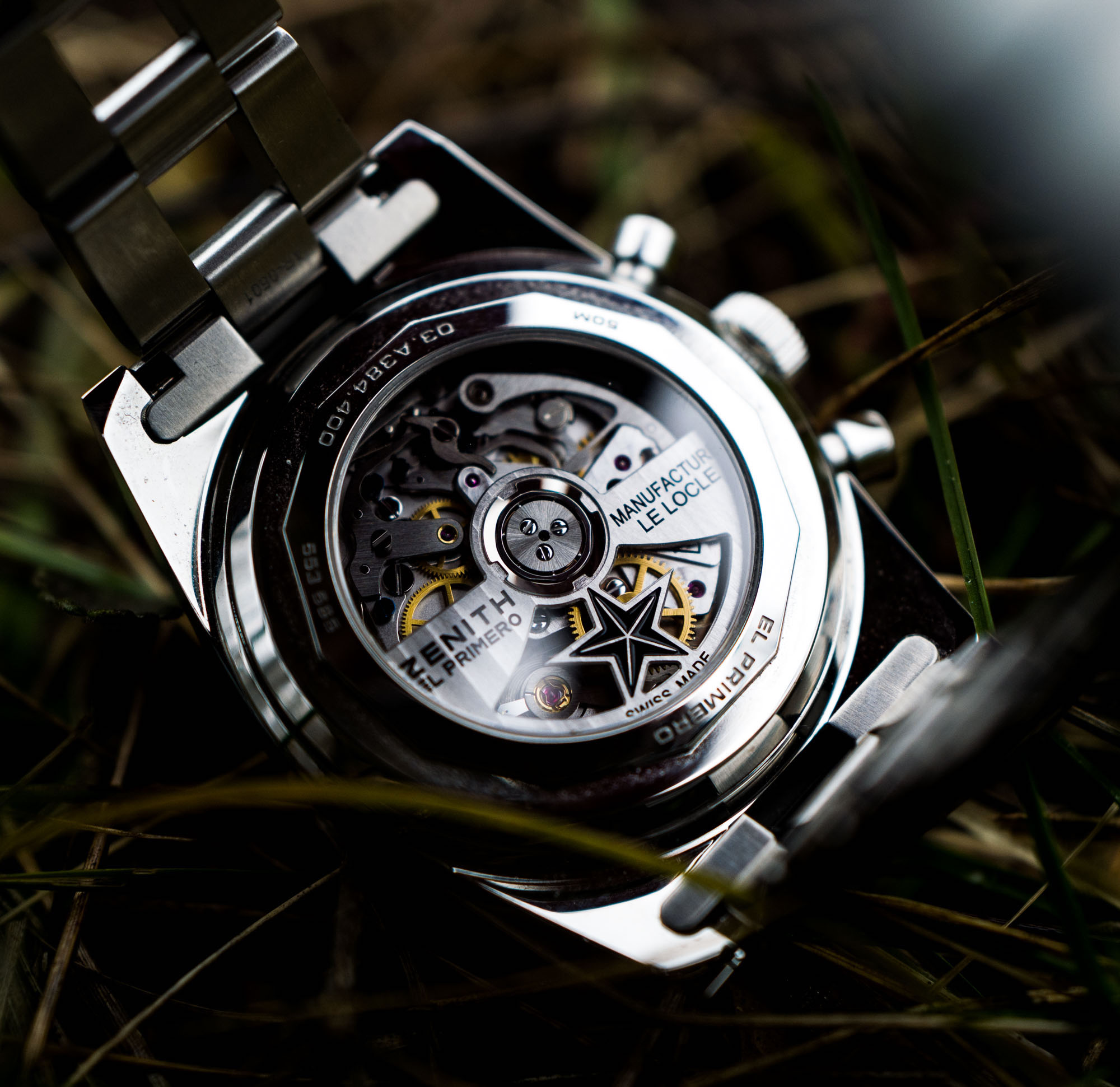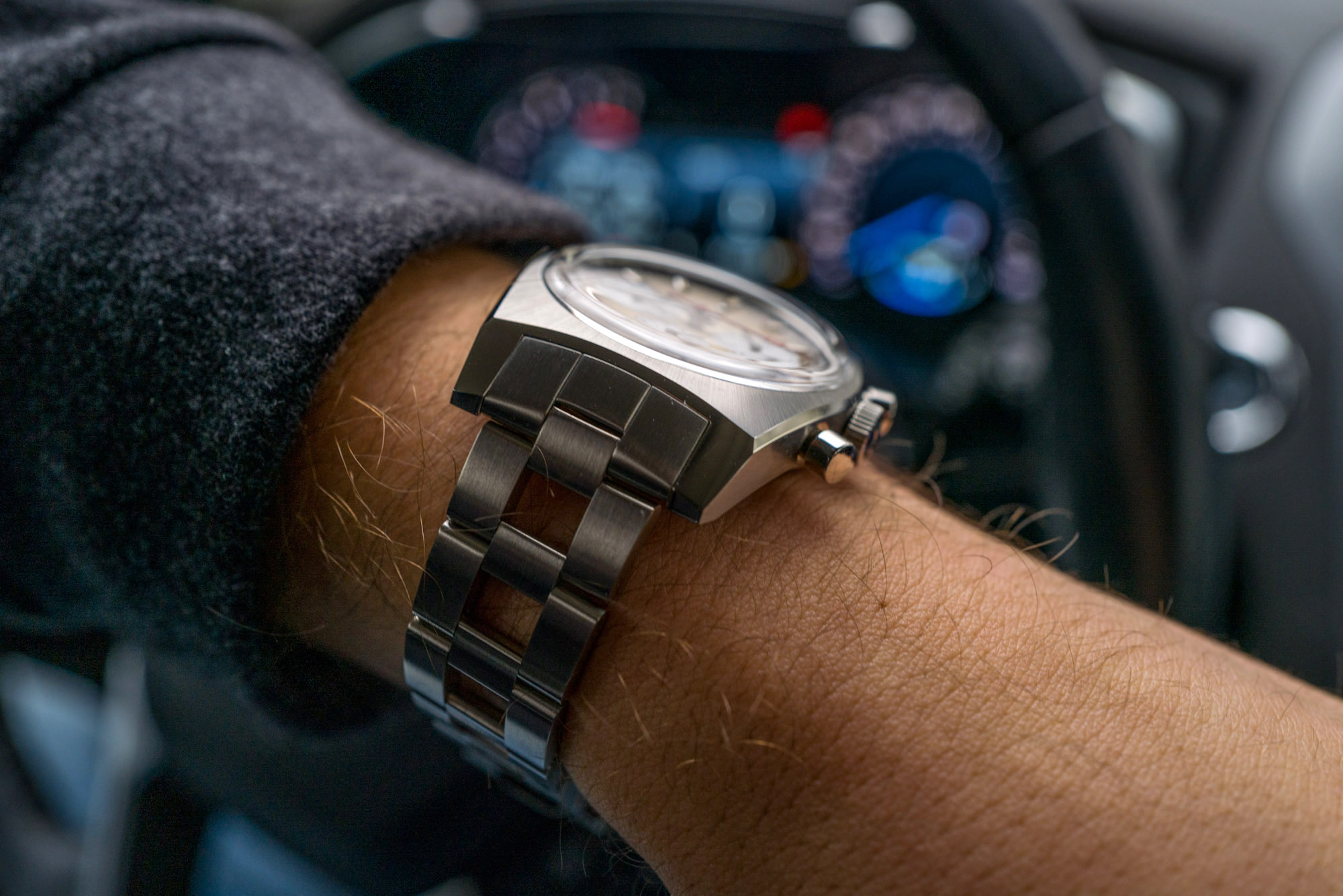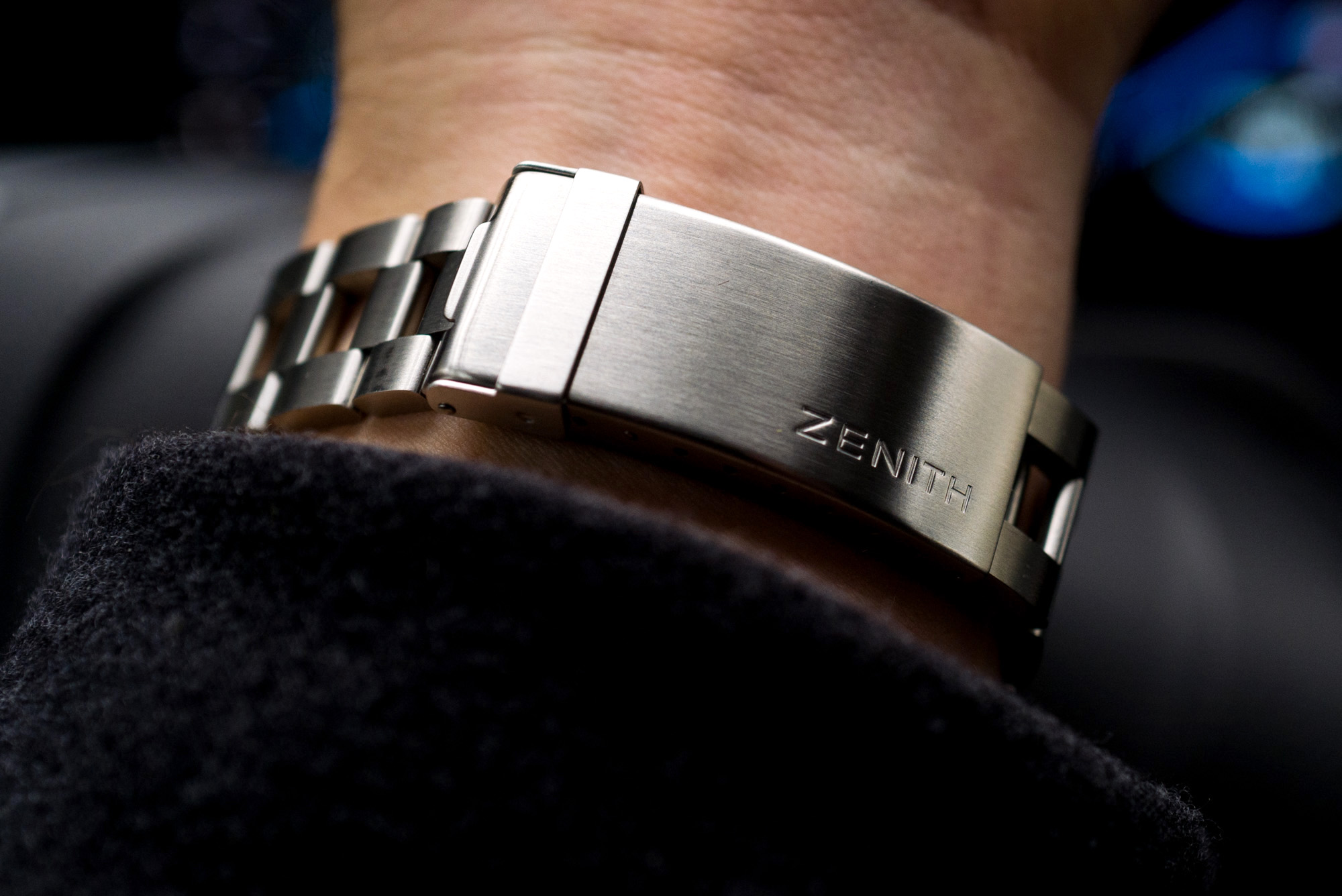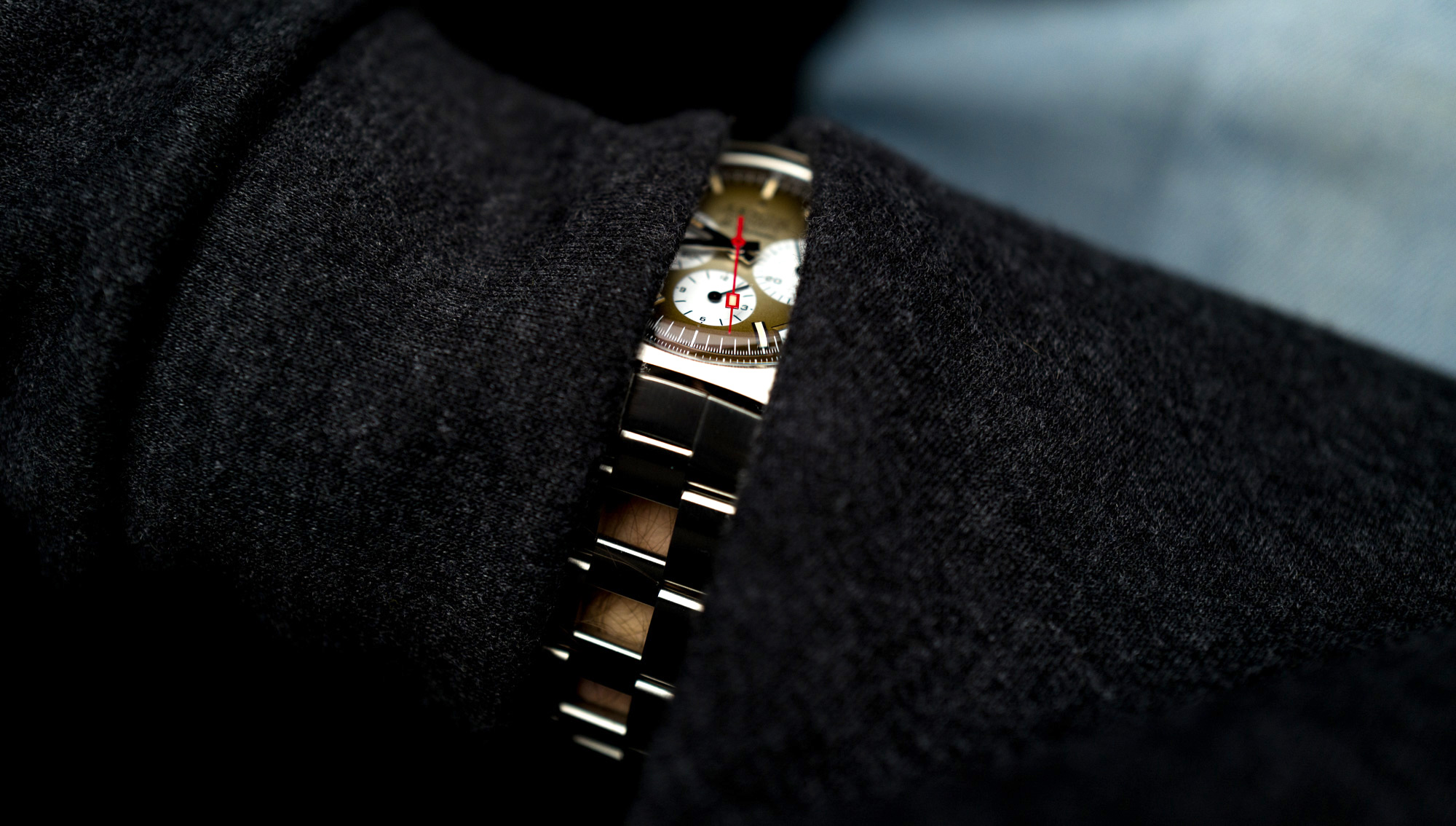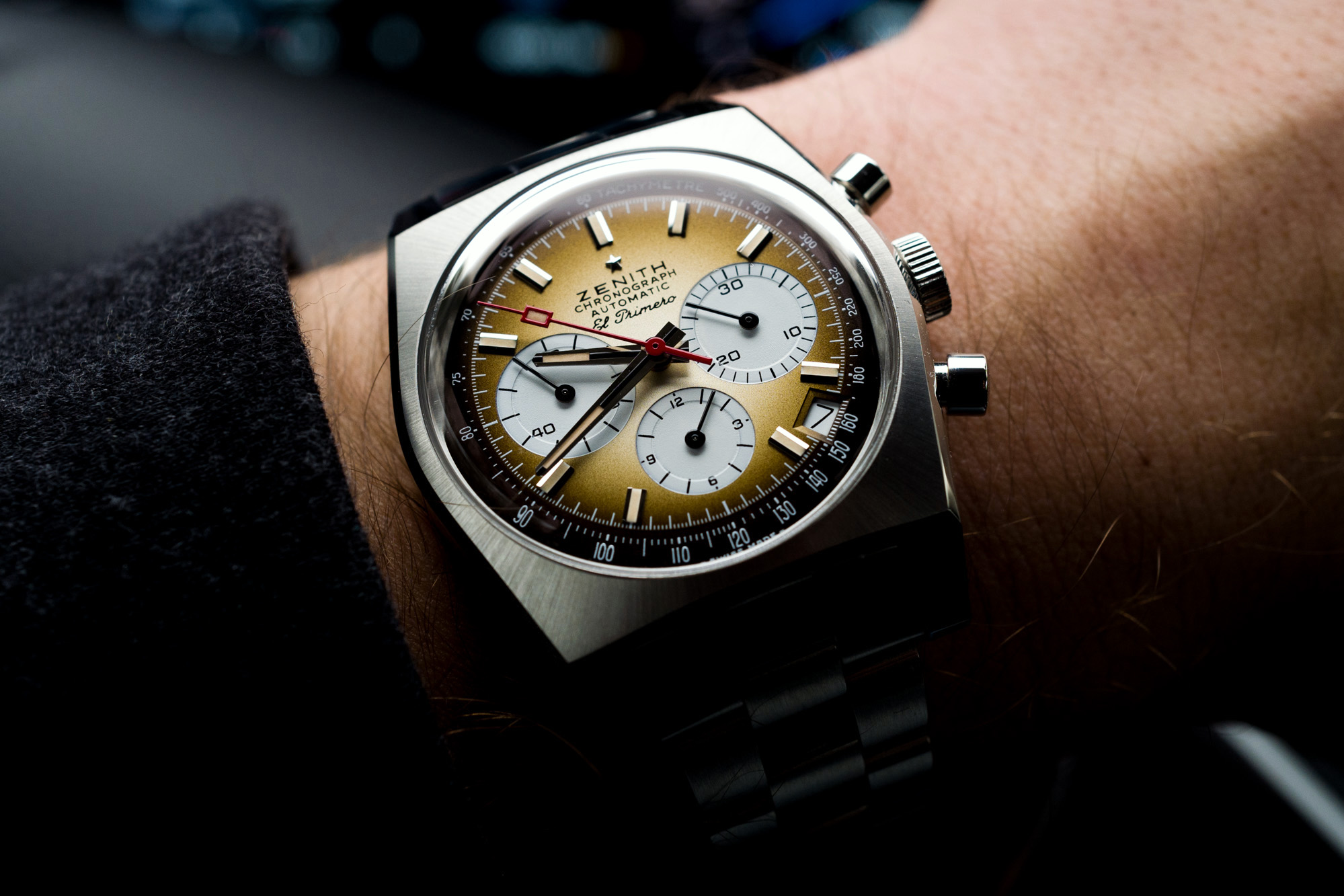
I take no pleasure in saying this: Most recent years’ vintage re-release watches leave me cold for a variety of reasons — but those belong in another article. What, then, is the freshly announced Zenith El Primero Chronomaster Revival A385 with its Gay Frères bracelet, doing here, with me for a review, rather than being with a fellow ABTW team member? First, I’m a sucker for all things El Primero — including the horrifying Nataf-era Zenith Defy abominations that are so bad they are actually good. And this original design from 1969 is as legitimate an El Primero as they will ever get. Second, if you recall, Zenith had done exceptionally well during the more recent Dufour-era when every other week debuted a vintage-inspired Zenith, but few among those were as true to their origins as this aptly named “Revival A385.” Last, but not least, I wonder if a late ’60s recipe for the perfect (?) do-it-all watch still works half a century later.
Cliché #1: It’s dizzying to compare life in the late ’60s and early ’70s with what it’s like in the third decade of a new millennium. Cliché #2: Watches are time capsules, but few are time capsules in the way that the A385 is. It is just wonderfully odd to have a brand-spanking new watch that is so very close to how it was conceived and intended half a century ago. The Zenith A385 was a wonderfully modern timepiece in just about every detail, made by people and for people who are probably not even alive anymore — and even if they are, what watch they are going to buy next is probably pretty low on their list of priorities.
And yet, here we are, with a retro-futuristic watch that just received a new lease on life, aptly dubbed as an actual “Revival.” Let us now go through the three main issues I mentioned above.
Is The “Revival A385” The El Primero To Get?
As I said, this Revival A385 is as legitimate an El Primero as they get, so far as pedigree is concerned. That said, the last 50 years saw a truly remarkable — and still deeply under-appreciated — evolution of this caliber both in terms of technical complexity and “packaging.” Over this time, El Primero calibers were enhanced to genuinely impressive new dimensions, with perpetual calendar, alarm, tourbillon, minute repeater and Striking 10th complications added to a movement whose “base” rendition had already pushed the engineering envelope, big-time. More to the point, the El Primero has been packaged in all sorts of fascinating and entertaining ways since its 1969 debut — thus, unlike with a host of other brands big on vintage-revivals these days, you do have tons of amazing options to enjoy the El Primero beyond resorting to a vintage re-release. A Stratos Striking 10ths is, for example, an absolutely superb modern rendition of this chronograph with a novel spin on utilizing its celebrated 5Hertz/one-tenth-a-second operating frequency.
Nevertheless, the Zenith El Primero Chronomaster Revival A385 offers a host of considerable feats that most of its other modern counterparts don’t. First is that so-called time capsule feature. Take a glance at this and you will see a cutting-edge timepiece of the 1960s, exactly as the Zenith manufacture of that time best intended it. Simultaneously, it also happens to be one of the most technically and visually advanced timepieces of the entire Swiss watch industry of that time — and owning one of the ultimate products from any period of any industry has a spine-tingling coolness to it that “simply good” modern products cannot replicate, even if they are technically superior in all sorts of ways to their ancestors. In other words, many of us would rather own a death trap ’60s Ford GT40 than a safe and reliable ’21 Ford Mustang, even if the latter is superior in more than a few objective matters. On the wrist, the Revival A385 does have a certain cutting-edge coolness to it that the millionth run-of-the-mill vintage re-release diver watch or field watch or pilot watch we see debut these days simply don’t have. Because many of them are “simply good” products of yesteryear while the A385, I think, looks and feels like it was at the bleeding edge.
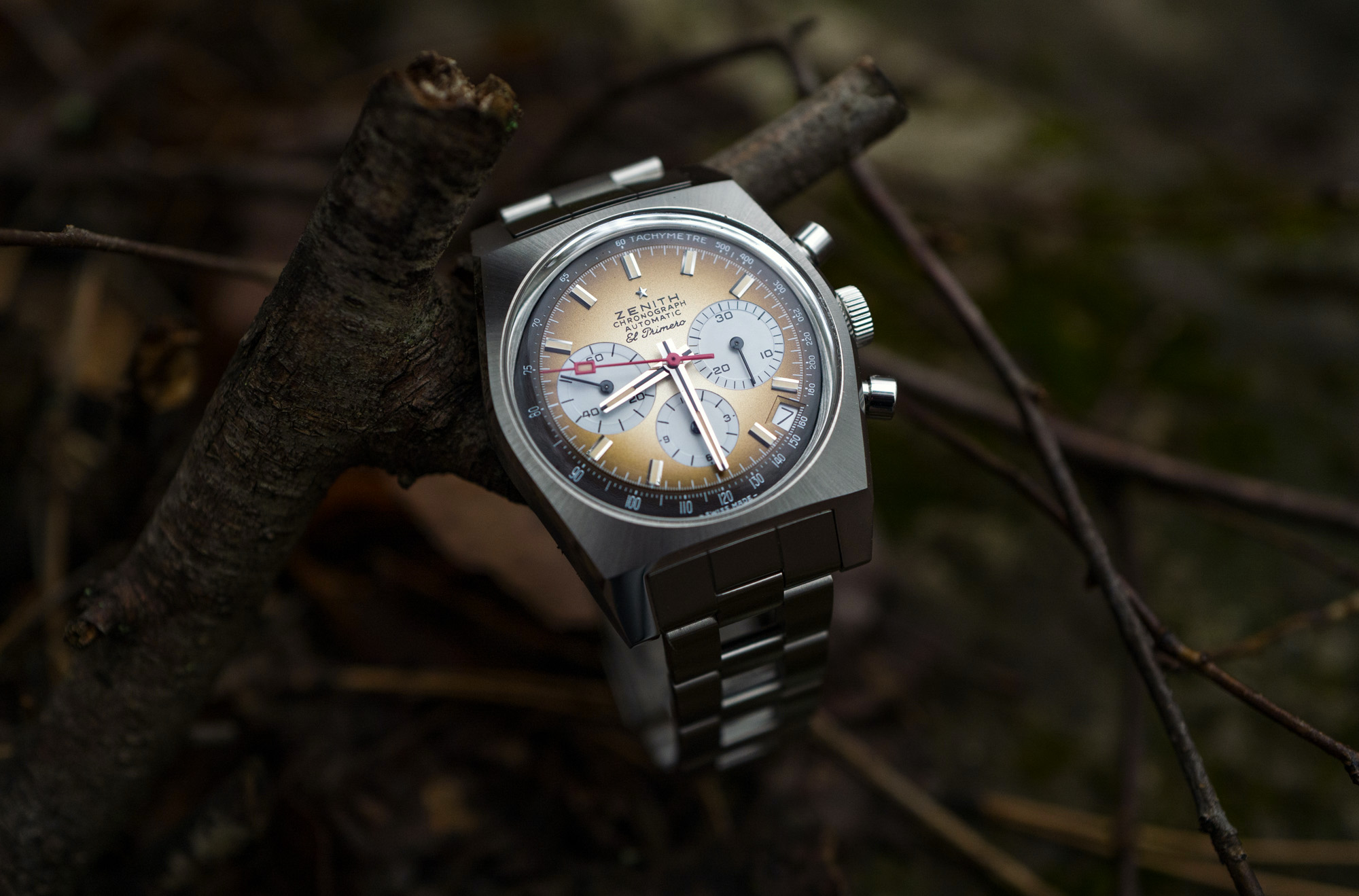
And that highlights the world of a difference that exists between today’s wide range of vintage re-release watches. A difference that is very scarcely identified but also is of ownership-experience-defining importance. Relaunching a vintage diver or field or pilot watch or whatever that looks like every other diver or field or pilot watch of an era, just with a different name on the front, seems like an utterly useless (and lazy) exercise to me and that largely explains why I don’t care much for the vintage re-release craze of the last few years. There are a number of other problems with it, but again, those belong to another article. The Zenith El Primero Revival A385 does have some period-specific design elements — like the round dial and crystal combined with a tonneau case with angular lugs — but all in all, it still very much appears as its own thing.
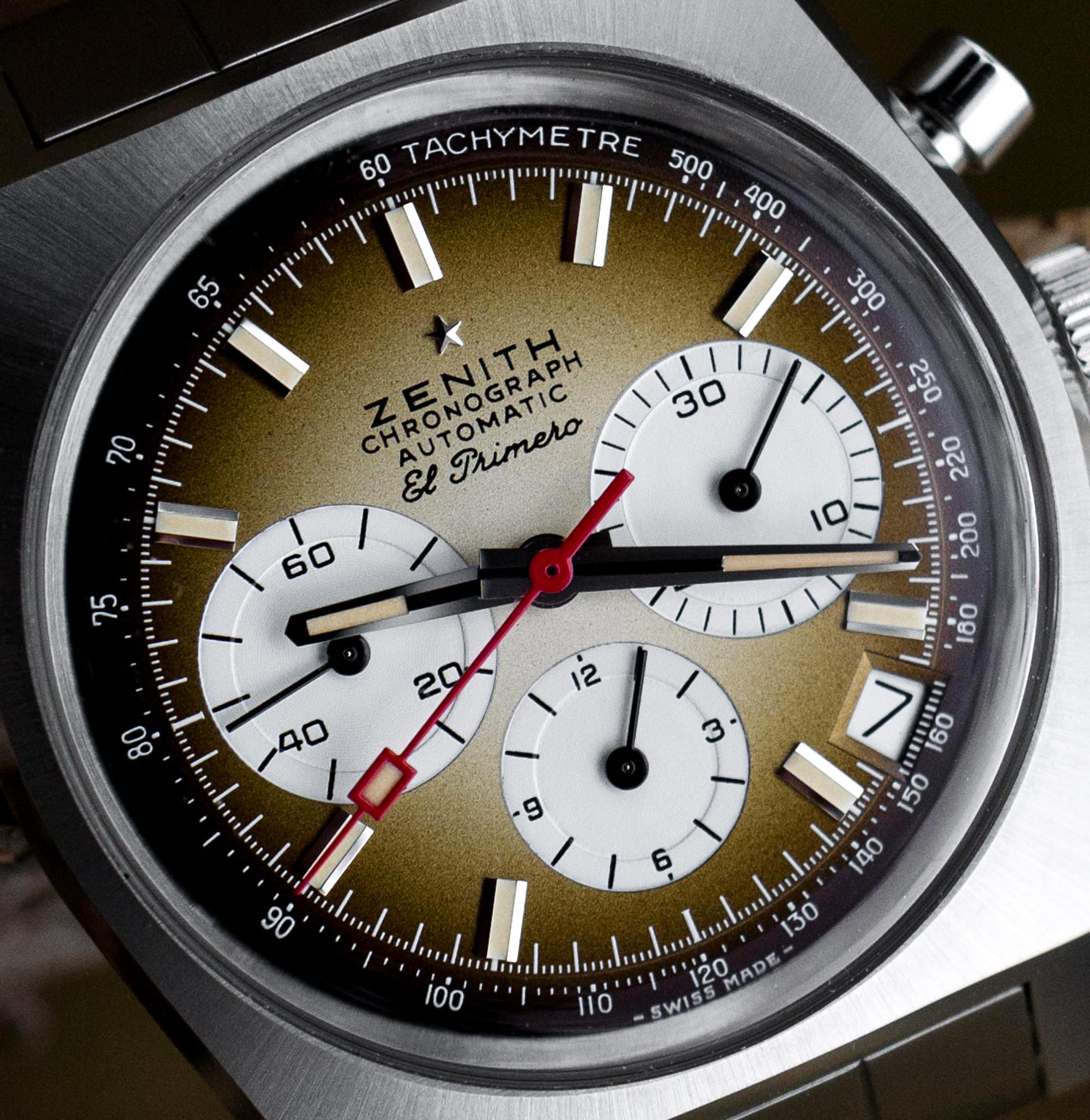 So, back to the original question: Is the “Revival A385” the El Primero to get? That is for you to decide. From my perspective, as legitimate an El Primero this is, I can only urge you to consider the number of novel and cool iterations the El Primero has revealed over the last few decades and compare those with this before pulling the trigger on a vintage revival.
So, back to the original question: Is the “Revival A385” the El Primero to get? That is for you to decide. From my perspective, as legitimate an El Primero this is, I can only urge you to consider the number of novel and cool iterations the El Primero has revealed over the last few decades and compare those with this before pulling the trigger on a vintage revival.
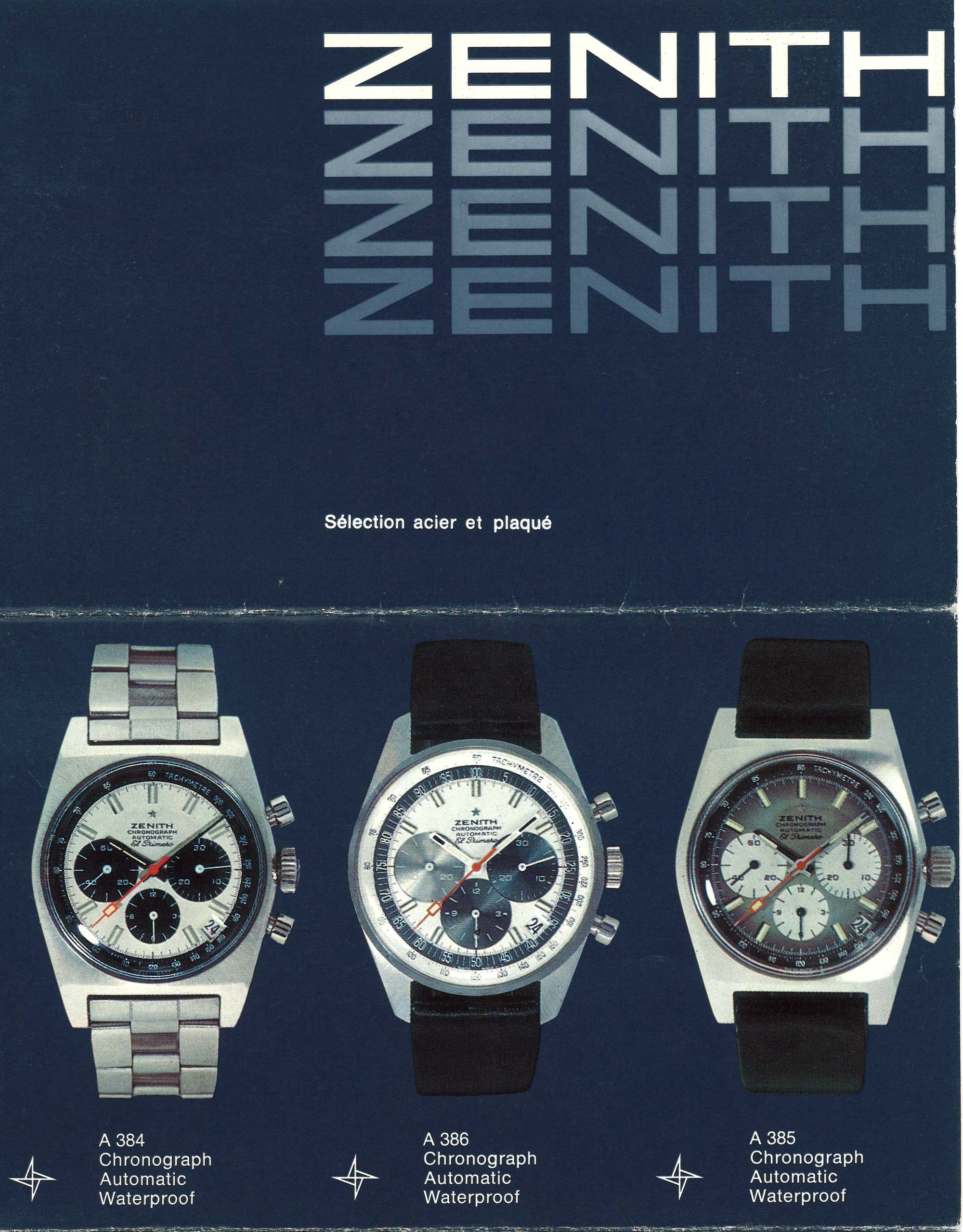
How Close Is The “Revival A385” To The 1960s Original?
For better and worse, it’s very close. As you see above, the A385 came on a “dégradé” or “smoked” or “vignette” or “ombré” dial was present on the 1969 original — something that, I have to say, I myself wasn’t expecting to see. It’s the sort of dark-periphery dial that although hasn’t ever become completely extinct, has actually only been all the rage for the last number of years since H. Moser & Cie. loudly brought it back into fashion. And so the Zenith El Primero Revival A385 manages to stay true to its original self while also being very fashionable – I mean even Rolex does “ombré” dials now (as they like to call them). Zenith goes so far as to say that the A385 had the first gradient dial in the watch industry – a bold claim that is difficult to very from half a century and a quartz crisis away, but I feel comfortable in perpetuating the notion that it might very well have been among the first.
Zenith claims the case is “an actual reproduction of the original model from 1969 in an exercise of »reverse engineering« by the manufacture. Using the original blueprints and production plans, each part of the A385’s 37mm tonneau-shaped stainless steel case, including the pump-style pushers, is faithful to the original 1969 model.”
Now, that’s very cool. Zenith is nice enough to exclude the fact that this modern case is about 4,000% more impressive in quality than anything that was possible in the late 1960s — through no fault of the period’s watchmakers. It’s just that the base material (316L stainless steel) and modern machining and finishing techniques together allow for a case that looks more like jewelry and less like something crafted from a tin can. The polished bevel that sweeps along the upper edge of the case is so sharply defined and so lustrous in its surface that it well and truly humiliates even the more expensive watch cases of the ’60s and early ’70s. In other words: Yes, the shape and some of the surface treatment styles are faithful to the original, but the overall feel of the case is incomparably better. The same goes for the domed sapphire crystal on the 2021 model in place of the acrylic glass found on the Zenith El Primero A385 of 1969. The solid caseback has also been replaced by a display back, showing off the El Primero 400 movement.
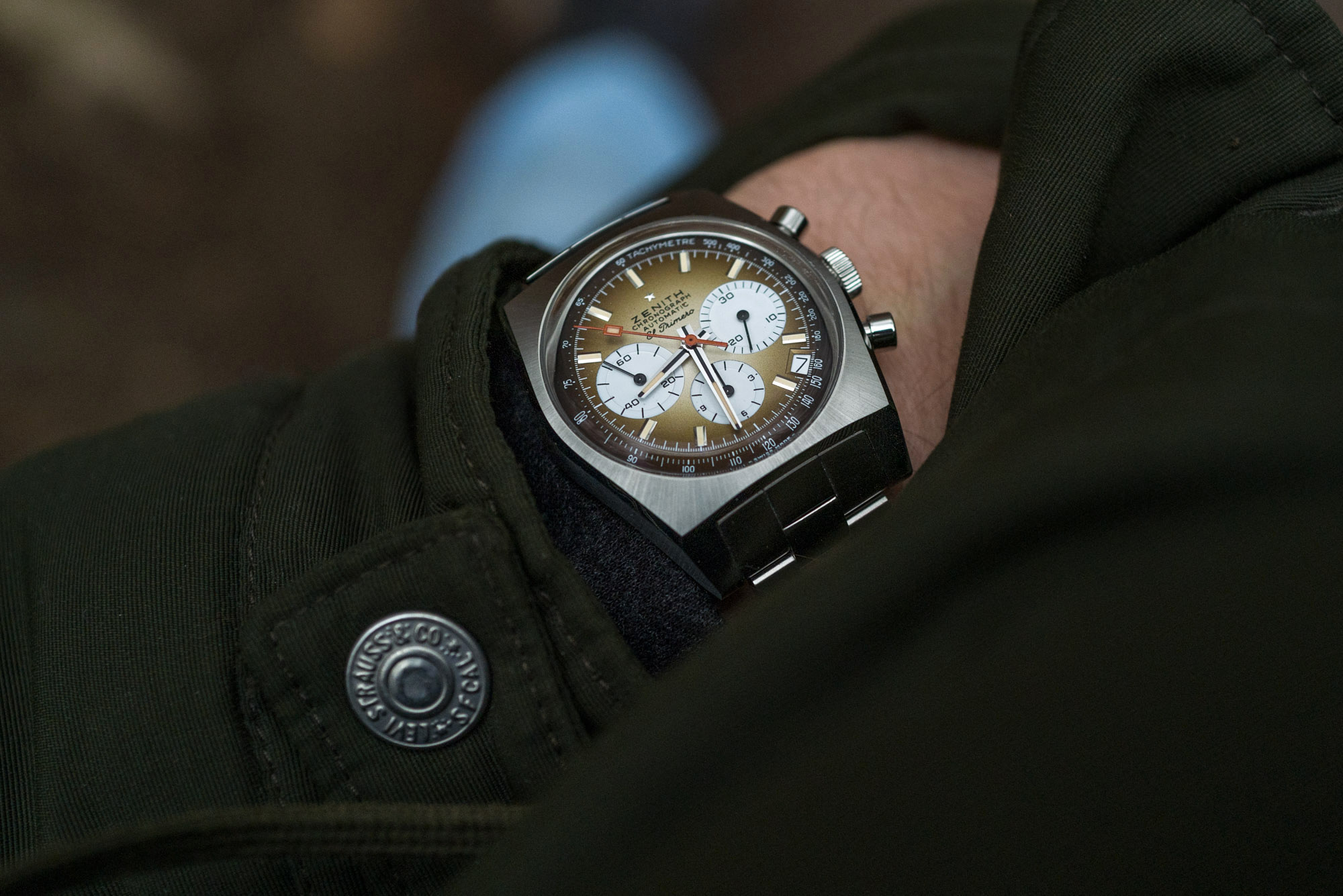
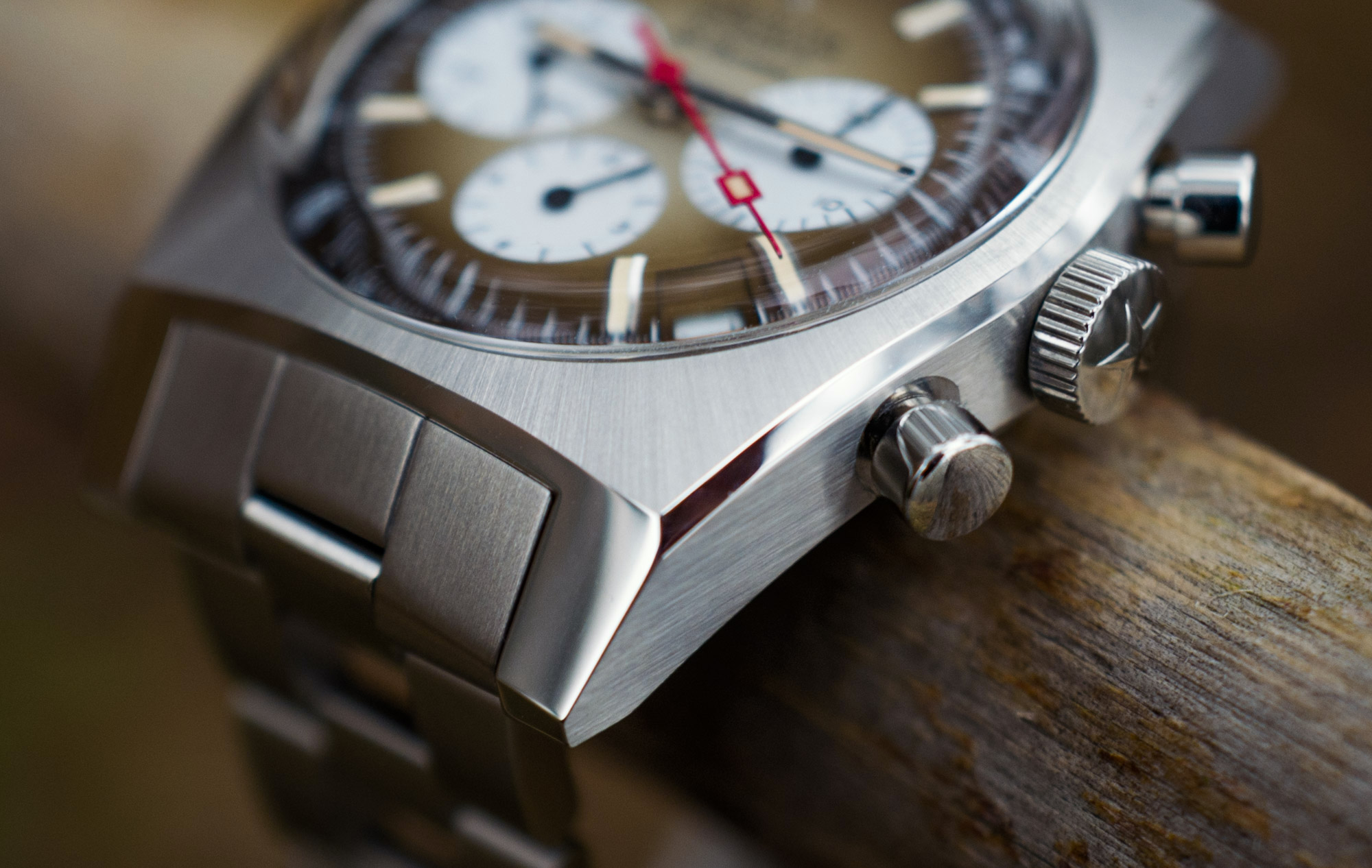
Another nice touch is the centralized sunburst brushing of the upper case plane: It’s like an explosion of infinitesimal lines radiating from the dial or the movement within. It energizes the overall aesthetic a lot more than one would expect. Strangely, I found the large polished sections of the lugs less impressive than the polished edges along the side of the case. Not only are these large polished lugs function as a scratch magnet (no matter how careful you are, it’s only a matter of time), they also appear to have a somewhat uneven surface and a lesser-defined sheen. If you want a watch case p*rn, you won’t be satisfied unless you go full Zaratsu, but I reckon the lug area on the A385 case does have at least a little room for improvement. Certainly not a dealbreaker, especially when considering the quality attained everywhere else on the case.


Another Zenith El Primero Chronomaster Revival A385 treat is the Gay Frères ladder bracelet, a rather self-explanatory design if there ever was one — and a very sixties look. Whereas higher-priced watches of the ’60s and ’70s may be inferior in terms of material quality and fit and finish, a shockingly recurrent superiority on their behalf is wearing comfort when compared to chunky modern luxury watches. The tinny, light metal alloy, the loose joints between the links, and the oftentimes loose end-links together create a light and adaptable feel on the wrist. What one finds comfortable is of course subjective and your mileage may vary, but in my experience vintage watches fitted with bracelets have often proven to be superior in terms of extended wearing comfort.
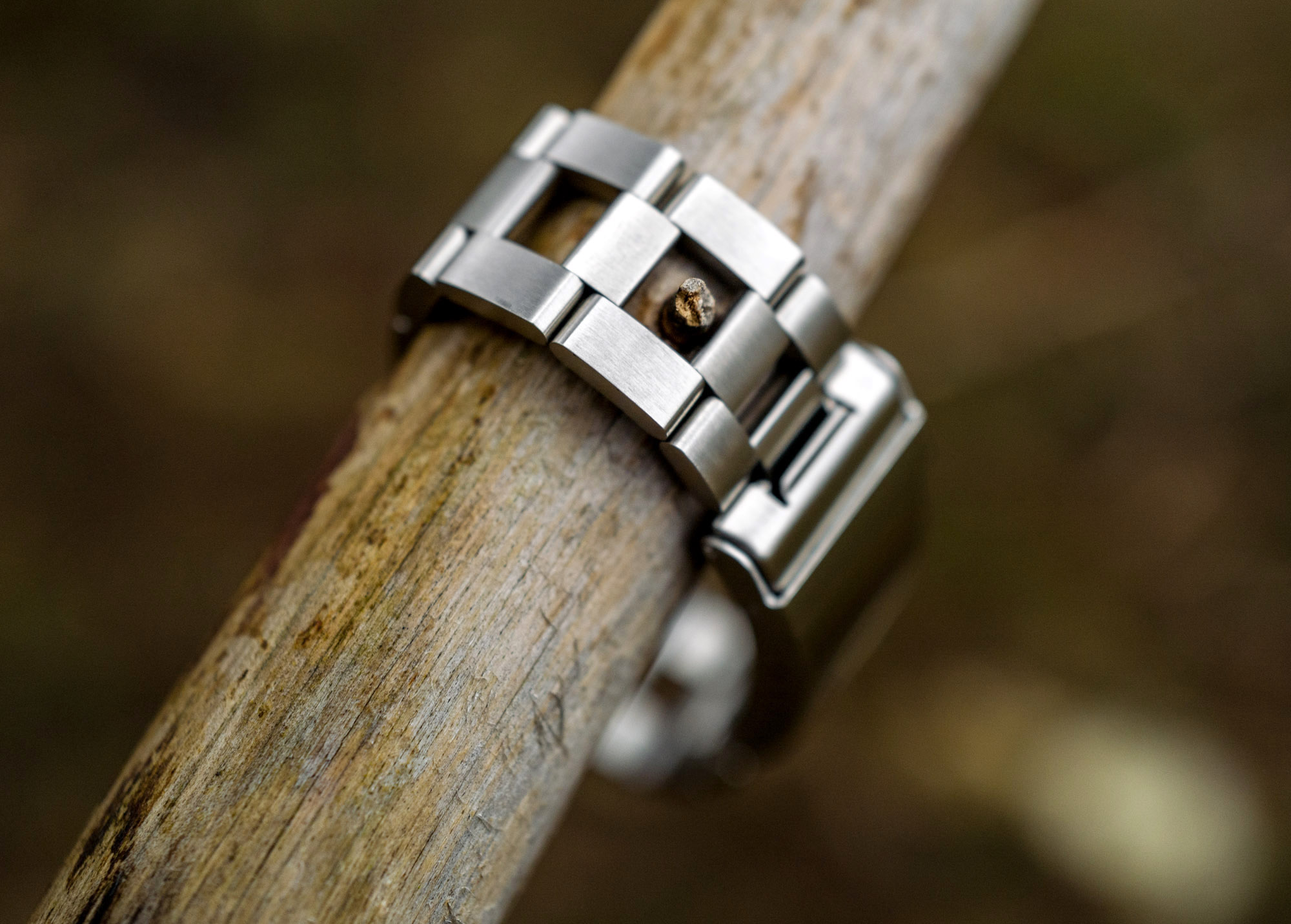
Although the solid links of the Zenith El Primero Chronomaster Revival A385 Gay Frères bracelet (try saying that fast three times in a row) certainly feel a lot more robust than just about any bracelet link from half a century ago, the ladder design helps keep the bracelet supremely light and, yes, very airy. I never once got sweaty under the bracelet and I have not experienced any hair-pulling whatsoever either. Again, a sixties design that not only looks refreshing and cool but is also noticeably more comfortable than most modern bracelets.
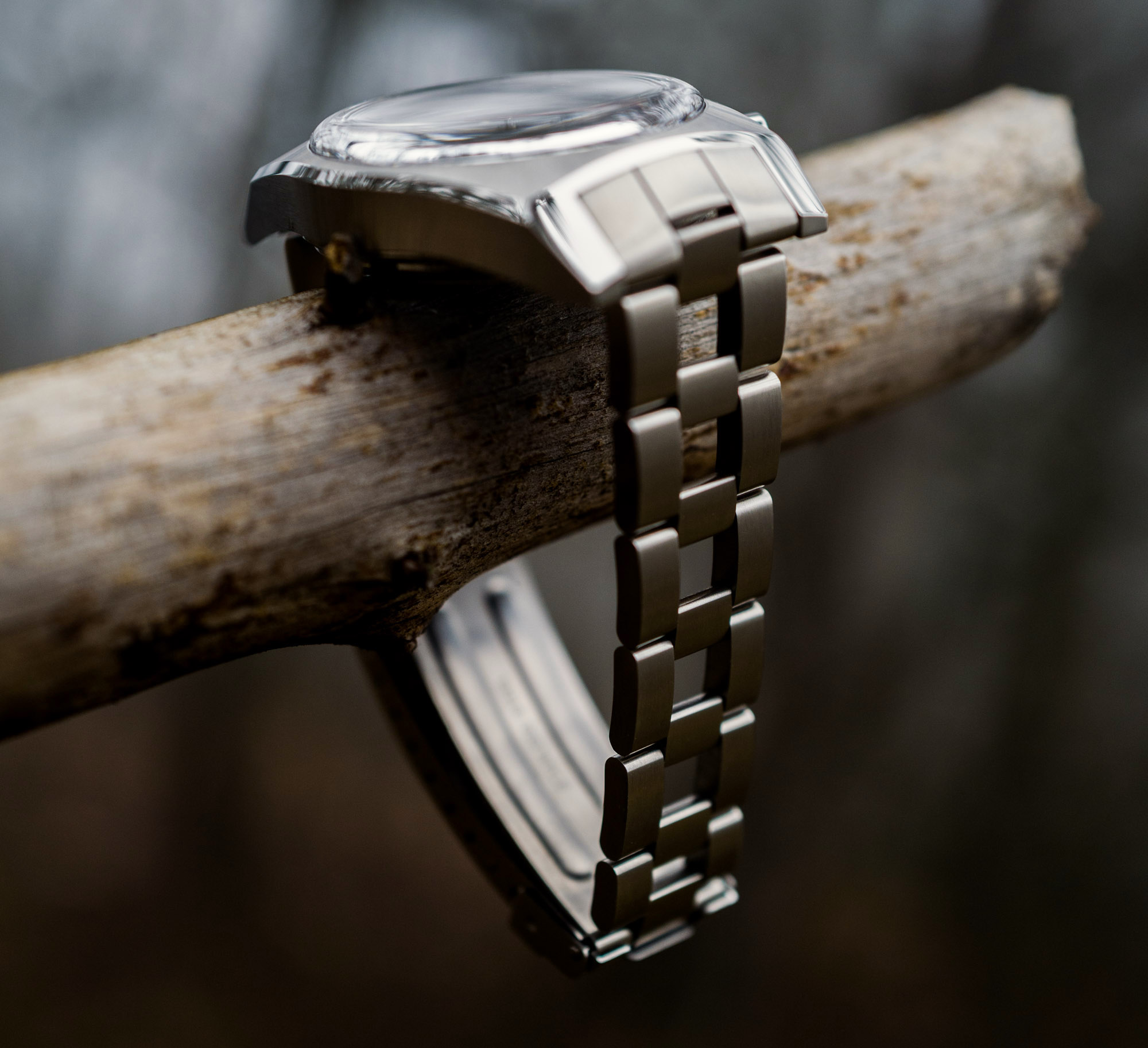
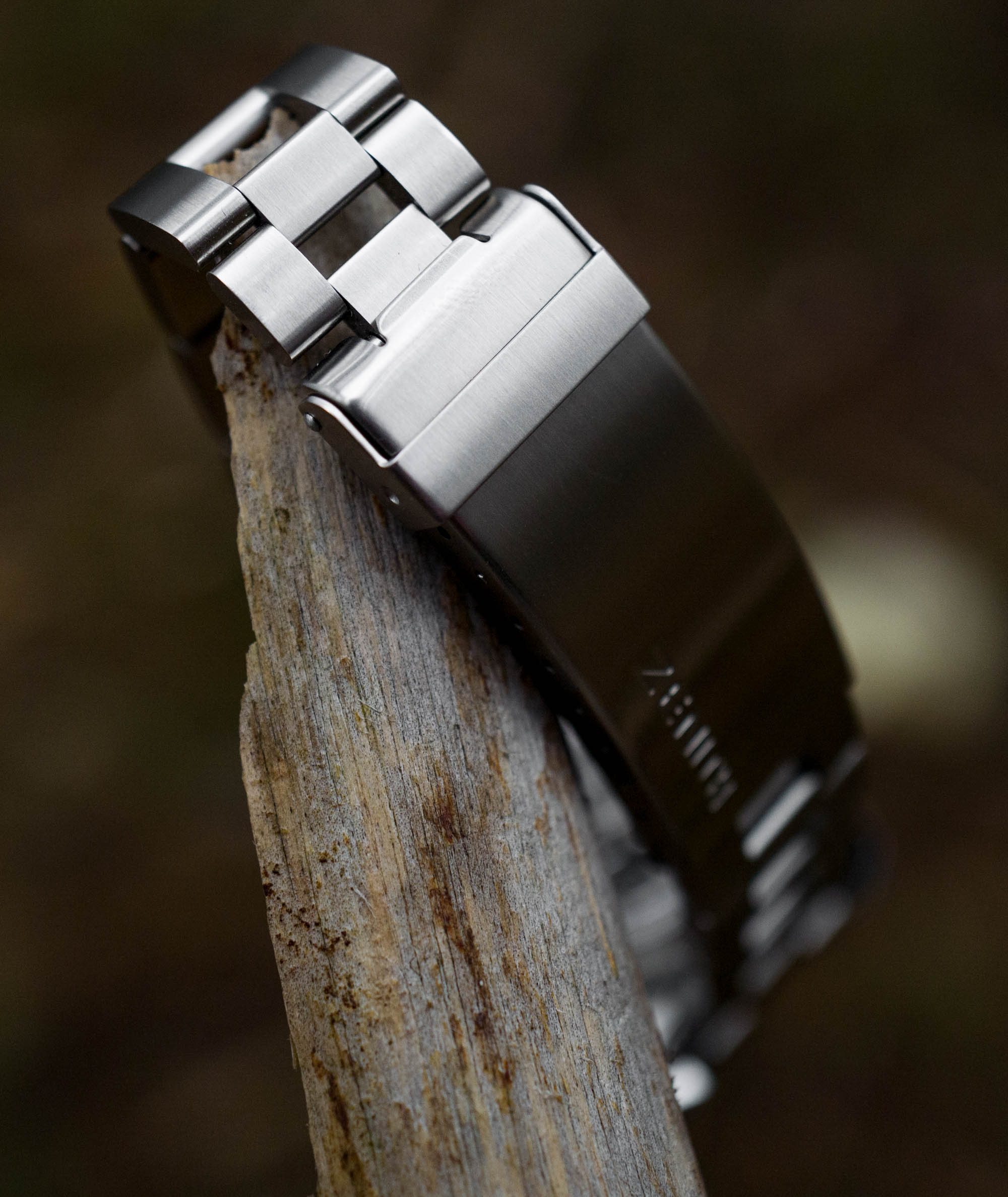
The one aspect I am yet to grow to tolerate (don’t think I will ever find the strength in me to do it) is the thin, stamped execution of the entire folding the clasp “mechanism” and the simply terrible folding cover on the outside of the clasp. The only thing worse than the clasp’s cheap-o appearance and jingling sound is its absolutely detestable operation. It’s such a fingernail-ripping experience that I have no idea how watchmakers 50 years ago could sleep at night knowing this exists on their watches, not to mention the concept of these being made freshly today. I honestly believe Zenith had to make an actual effort to deliberately make these terrible clasps because the systems they use on literally all their other watches have advanced beyond these decades ago. I just can’t force myself into a deep enough state of vintage-lover-trance to find this clasp acceptable – not for $1,000, let alone for nearly eight times that. I’ll cut Zenith some slack and admit they must have done this to please hardcore vintage-crazed folks. But frankly, there is good reason no luxury watchmaker makes such a clasp anymore.
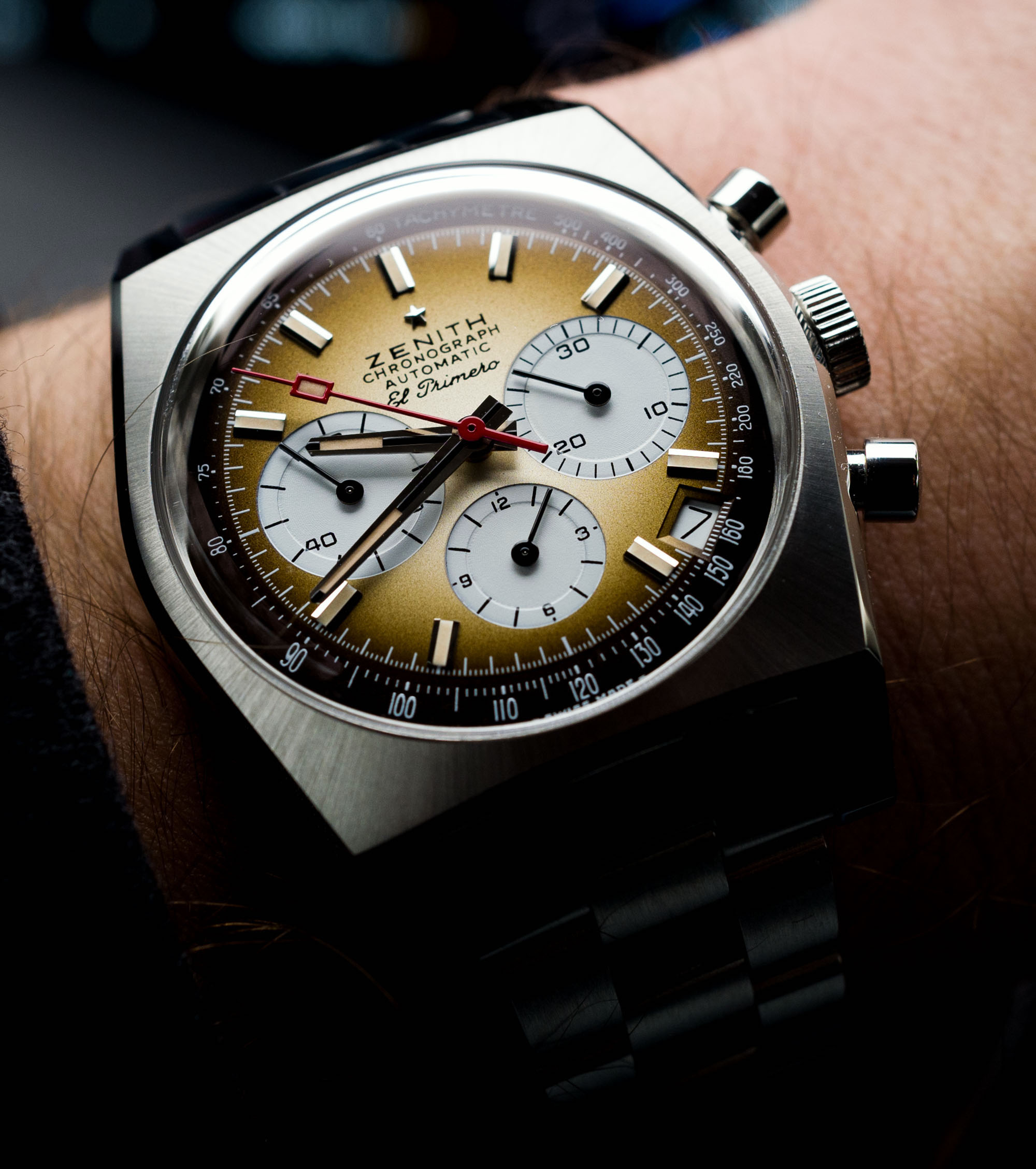
As I said in the beginning, “for better and worse,” the Zenith El Primero Chronomaster Revival A385 is very close to its 1969 original. In fact, Zenith’s efforts to accurately replicate the case finishing, bracelet construction, and I guess that stupid clasp, deserve to be applauded. As a result, the Revival A385 is only painful when you operate the clasp — the rest of the time, it is beautifully comfortable to wear and to look at.
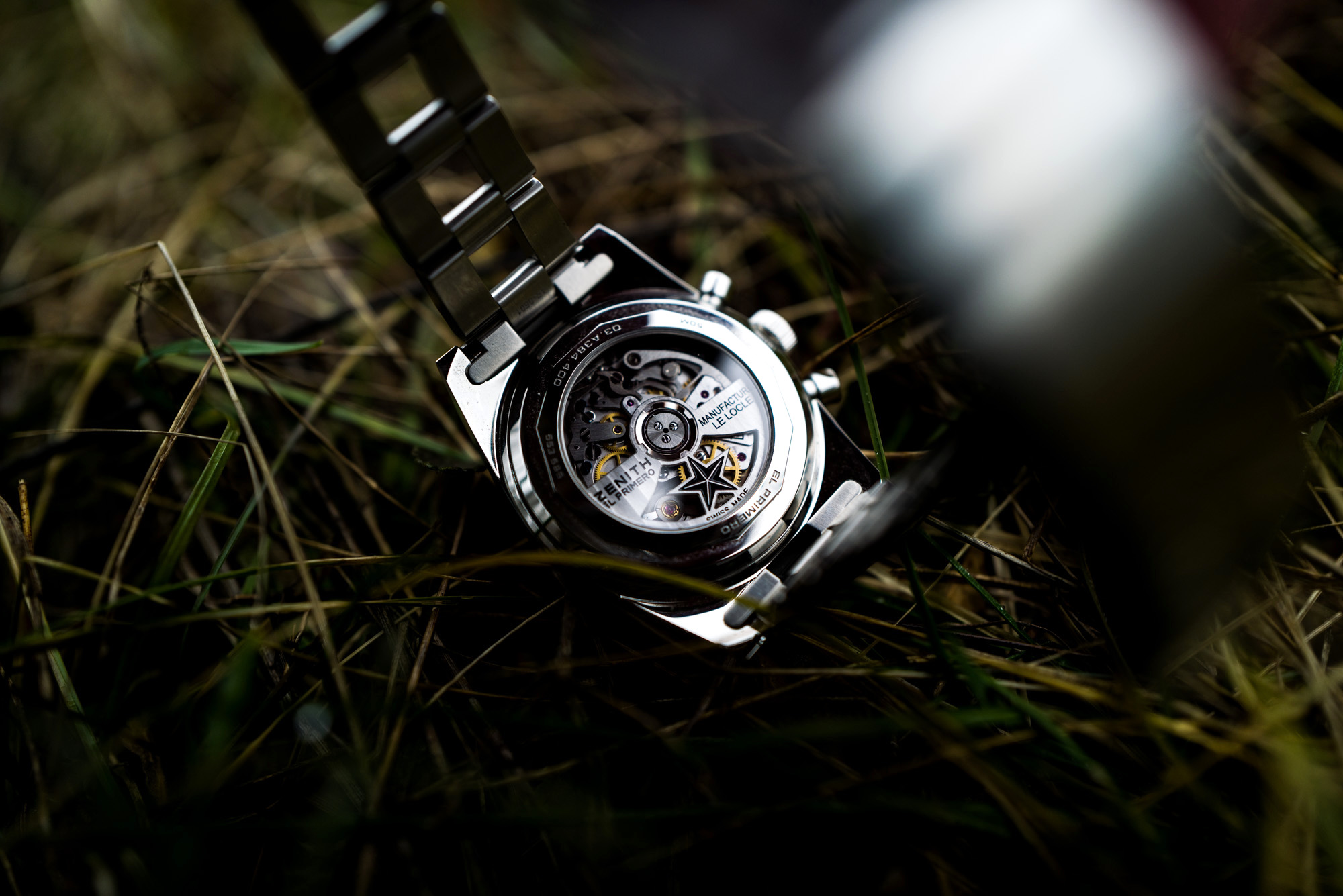
Designed with 1960s average watch case diameters in mind, the El Primero continues to look its best in a smaller, sub-40mm case. The El Primero Revival A385 exemplifies this perfectly both on the front and the back. On the front, the dial is free from any signs of superfluous “size enhancement” — large watches with small movements inside have their sub-dials crammed together in the center of the dial with acres of unnecessary extra space added next to the sub-dials to help the dial reach the periphery of the enlarged case. By contrast, the A385 displays fabulous proportions: See this in the metal and you’ll probably find that there is not one thing that you could enlarge, make smaller, or move to some other place without harming the overall aesthetic. The sub-dial layout is of course determined by the movement underneath and again, the El Primero serves this 37mm case perfectly.
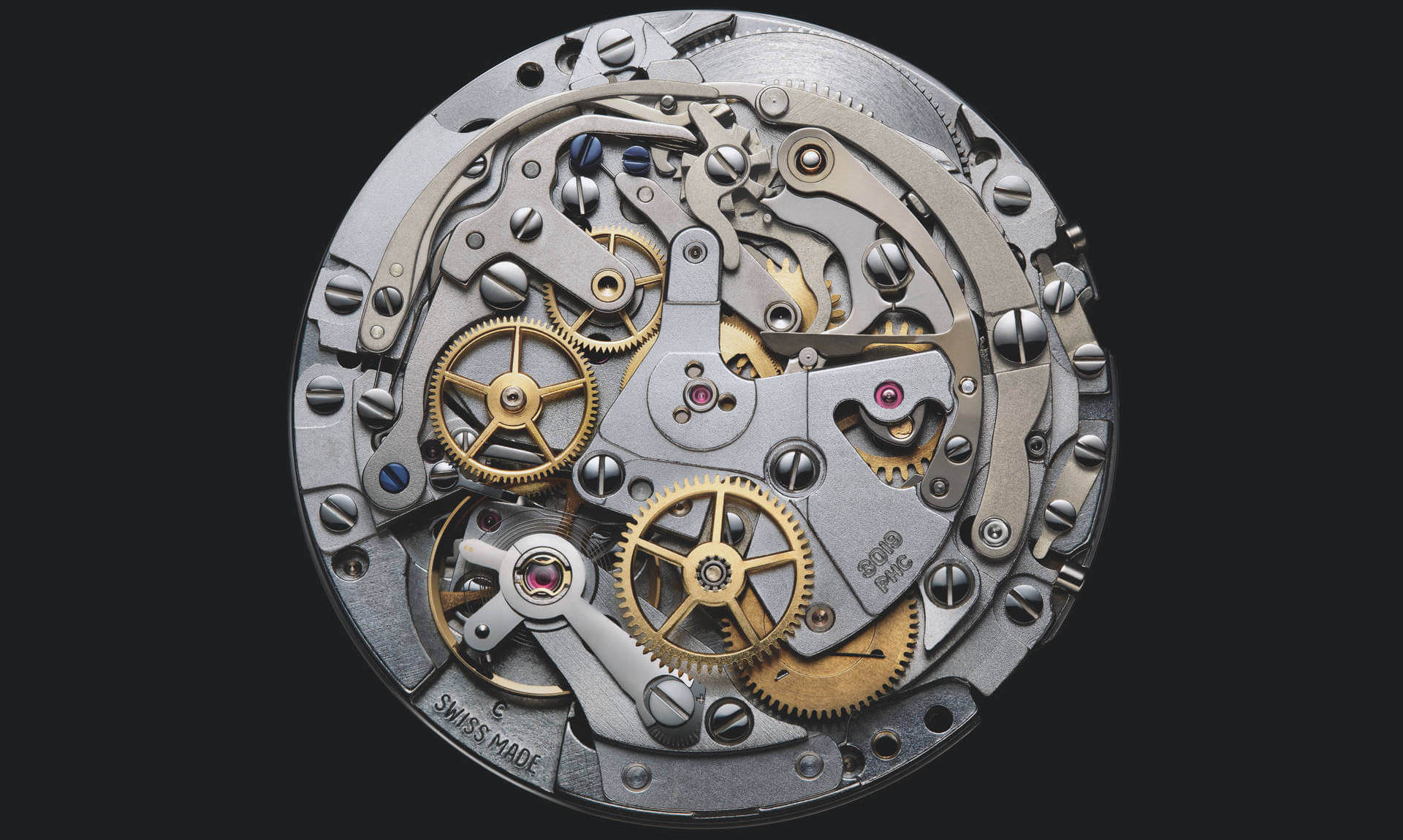
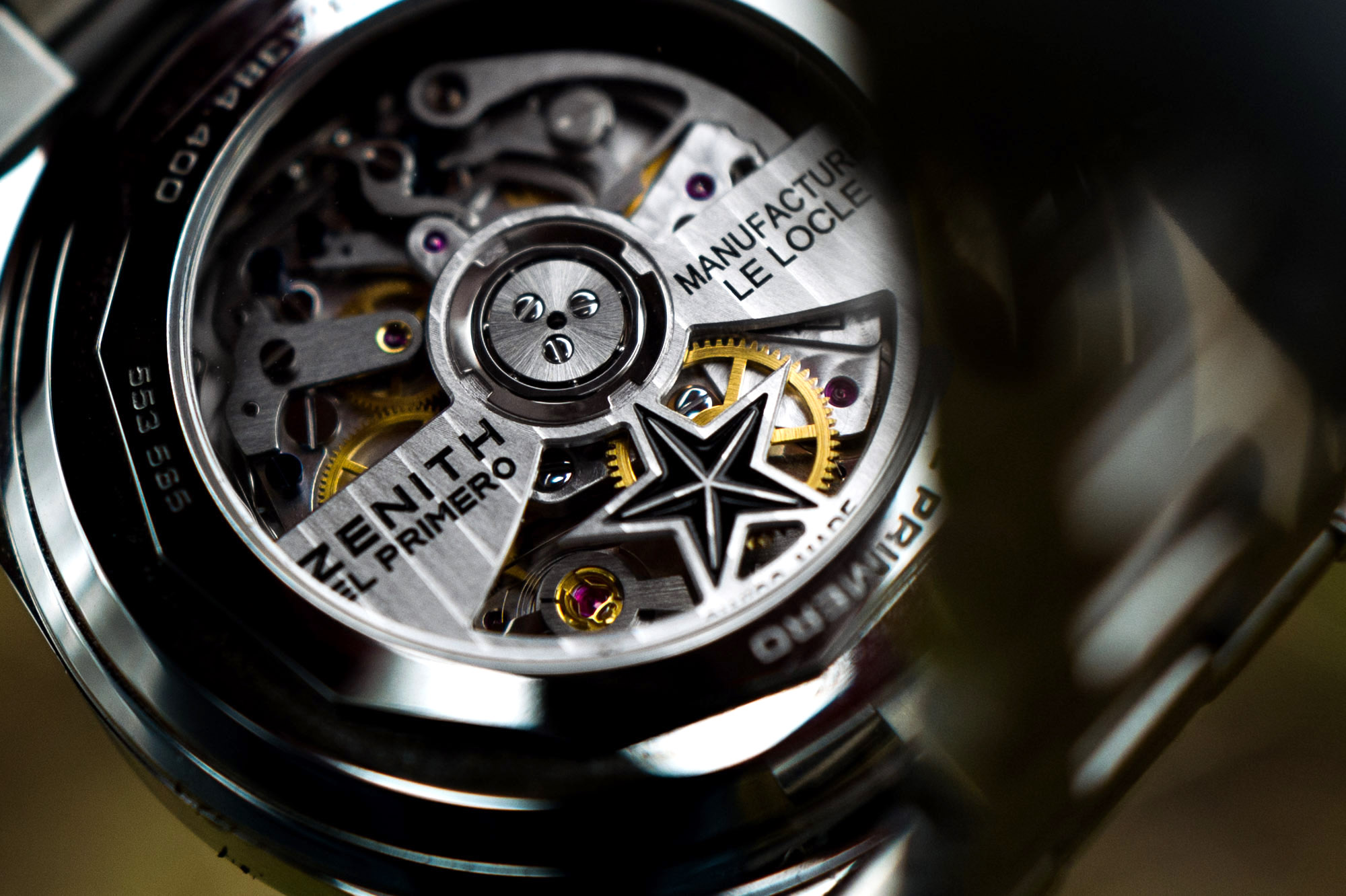
Compare the El Primero Caliber 3019 PHC from the 1969 original with the El Primero 400 that operates in the Revival A385 and you will find that the surface treatments and the overall quality of execution have of course come a long way in movement manufacturing. Sadly, the rotor has been removed for the image of the 1969 original, but the neatly lacquered and open-worked modern version is, of course, a lot more refined. Power reserve is 50 hours, which is rather impressive when matched with the 5 Hertz operating frequency, not to mention the small size of the movement. The El Primero was the first automatic chronograph caliber that operated at this high frequency – still largely unrivaled today and borderline sci-fi material back in 1969. A lovely quirk of the El Primero is how the first position of the crown adjusts the time and the second one sets the date, backward from how crowns work on most all other mechanical watches. This never fails to remind of the novel engineering solutions designing the first movement of its kind took. No hacking seconds is a small sacrifice to be made.
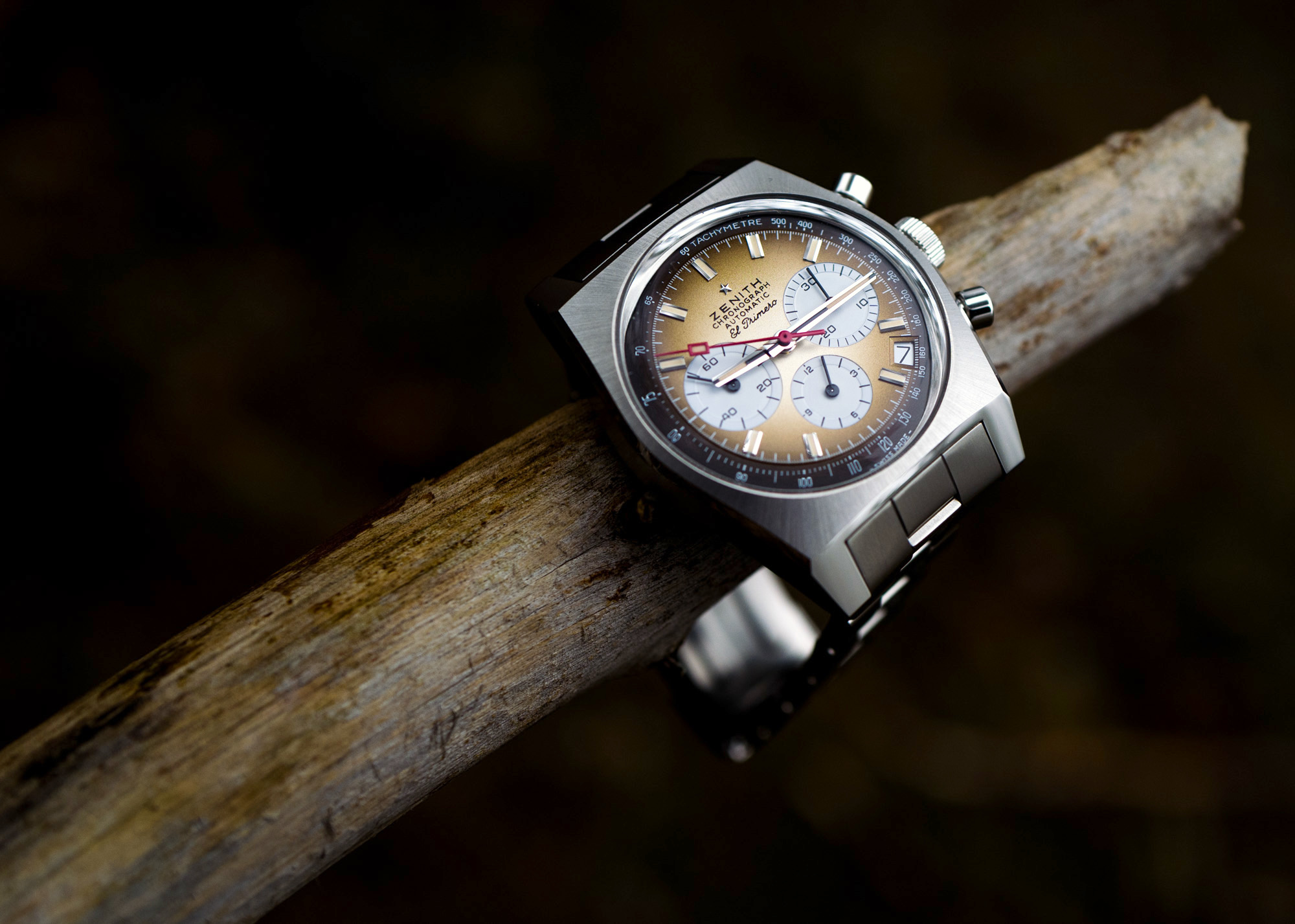
Operating the chronograph is a neat tactile experience — both pushers feel reassuring, with a quality springy click. Fancy modern chronograph movements such as the Breitling B01, Rolex 4130, or Grand Seiko Spring Drive chronograph all utilize a so-called vertical clutch that eliminates the seconds hand jump that is still present on the El Primero when starting the chronograph. 1960s manufacturing technologies simply weren’t advanced enough to create a vertical clutch and so every time the chronograph is started or stopped a lateral clutch pushes together or separates a set of wheels – one rotating, the other stationary at the moment of starting the chronograph. Because the mechanism presses the teeth of a rotating wheel against the teeth of a stationary wheel, if the teeth “clash” the chronograph seconds hand can make a small jump backward or forward. This is not without its upside, however: whereas a vertical clutch is hidden inside the movement and you’ll never get to see it in operation, a good old-fashioned lateral clutch is right on display: press the start-stop button and you’ll see the column wheel rotate and the chronograph wheels begin to mesh. It’s the chronograph caseback look and it’s easy to see how this can indeed be preferable to the perfect, but the invisible operation of its more modern alternative.
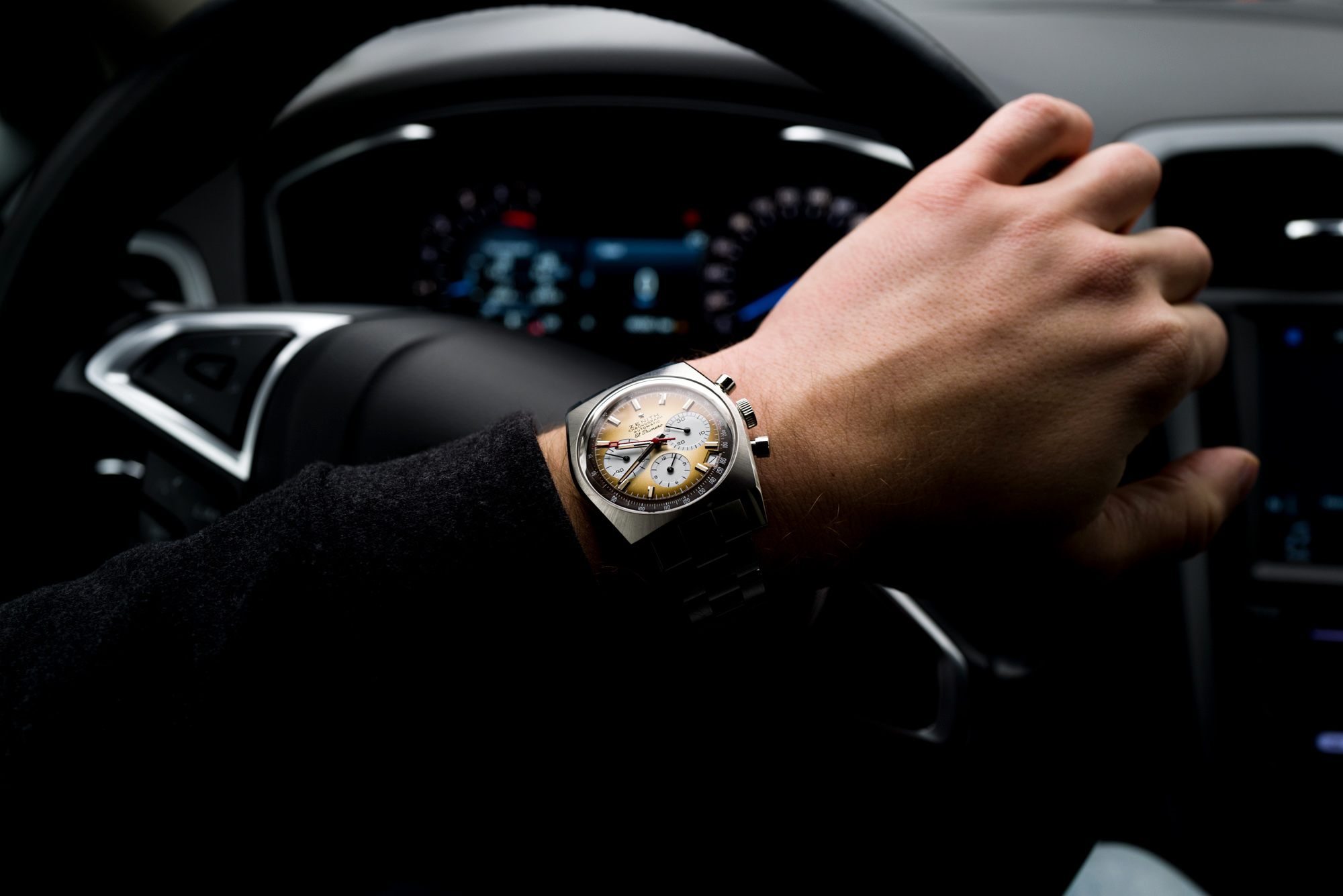
Summary
It’s a great thing the Zenith El Primero Chronomaster Revival A385 exists. It’s like an air-cooled 911 brought back to life. It feels great to wear and to operate (apart from that atrocious clasp) and Zenith has every reason to celebrate this inspired design that they so boldly created in 1969. In closing, let me just say this: if Zenith did nothing else but vintage re-releases, I wouldn’t have this watch in for review. I don’t want to see Zenith abandon the cool modern stuff that it’s doing now in favor of yet more vintage stuff. But as long as the Le Locle manufacture celebrating its past is not to the detriment of its blooming creativity, I say bring it on.
The Zenith El Primero Chronomaster Revival A385 costs $8,400 on the Gay Frères ladder bracelet and $7,900 on a leather strap and you can browse more watches equipped with the El Primero movement on the brand’s website.
Necessary Data
>Brand: Zenith
>Model: El Primero Chronomaster Revival A385 03.A384.400/385.M385
>Price: $8,400 USD on the Gay Frères ladder bracelet and $7,900 USD on a leather strap.
>Size: 37mm-wide, 14.7mm-thick, and 50.9mm lug-to-lug distance.
>When reviewer would personally wear it: Daily.
>Friend we’d recommend it to first: Fan of vintage designs, but expects modern quality of execution.
>Best characteristic of watch: Bold and proudly unique looks, great movement, frankly awesome bracelet.
>Worst characteristic of watch: Nail-busting clasp has to go.


